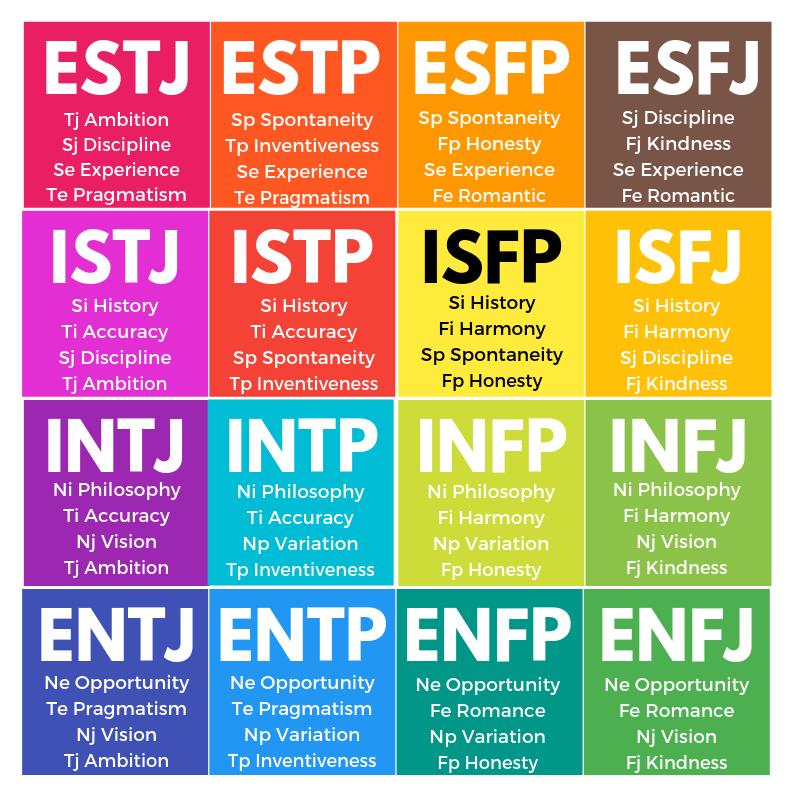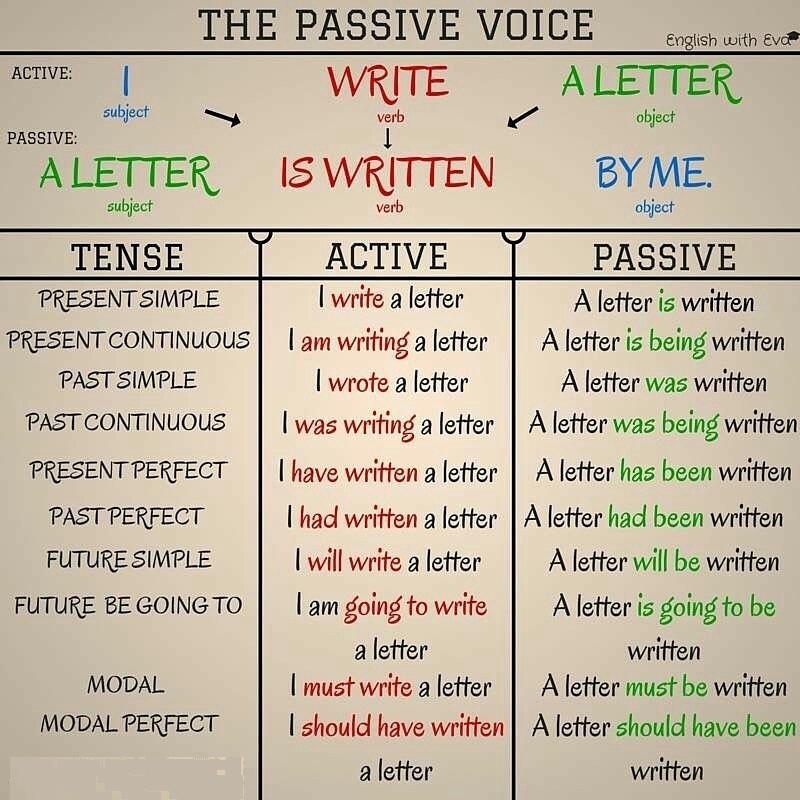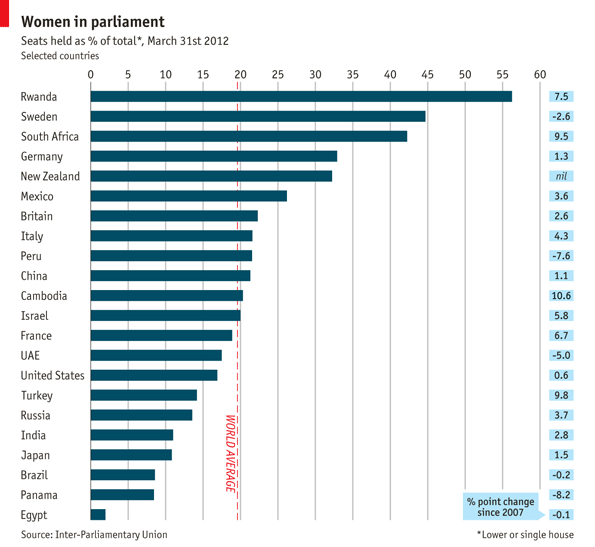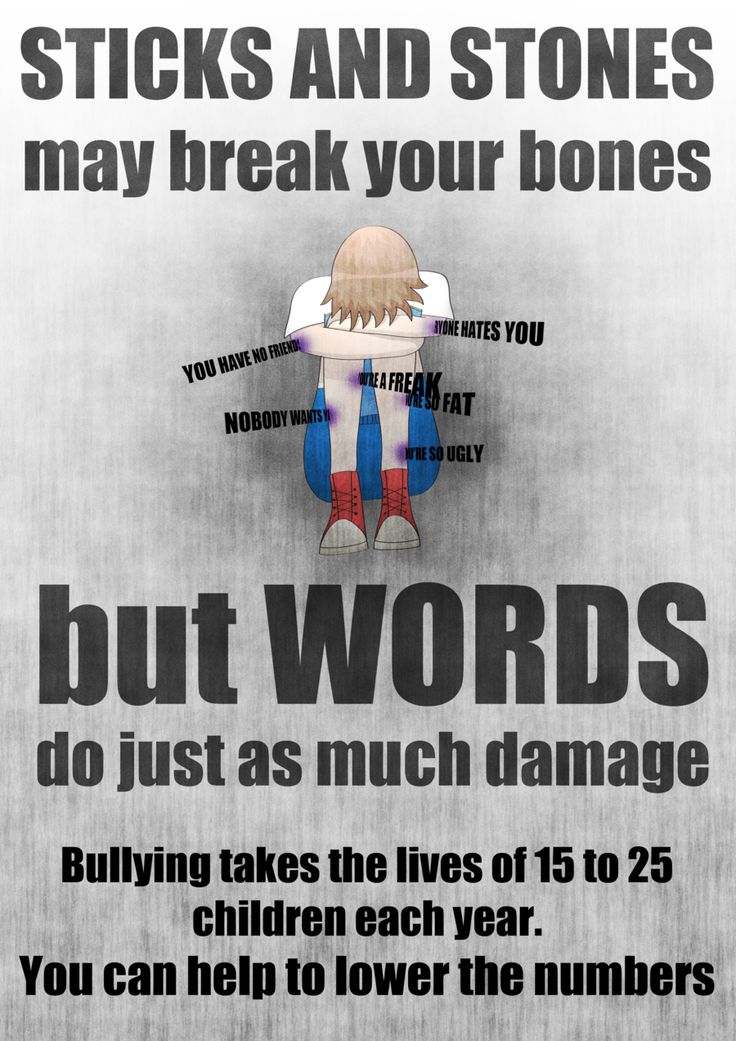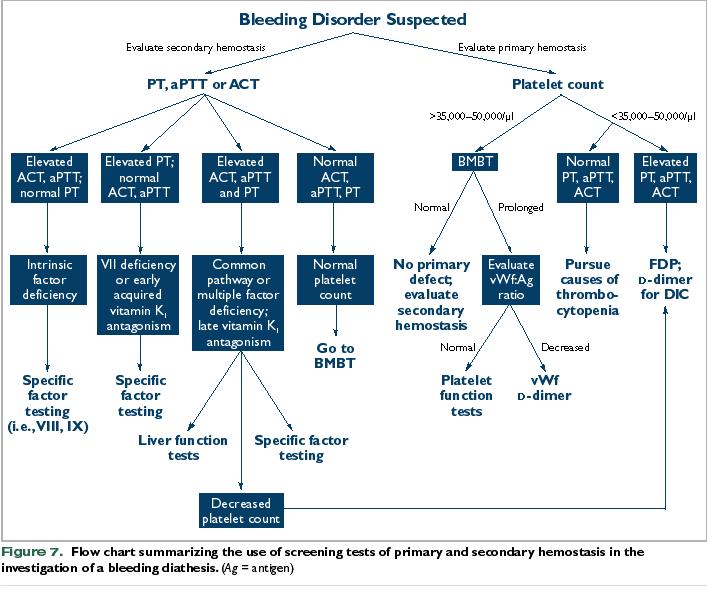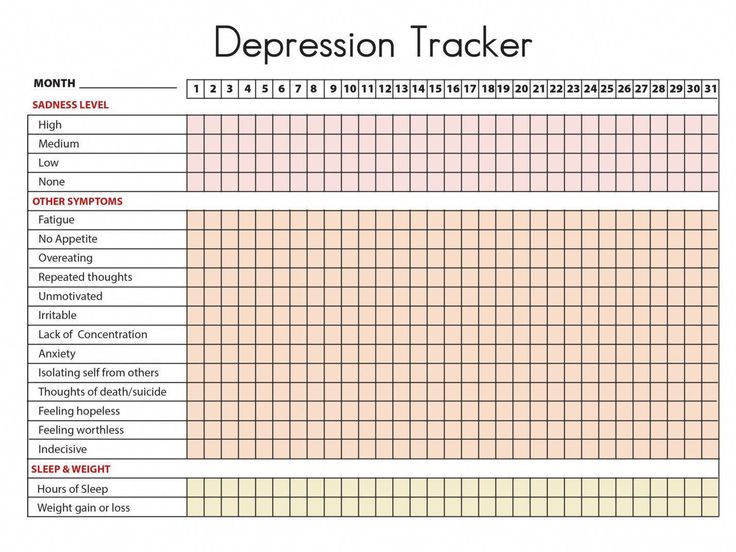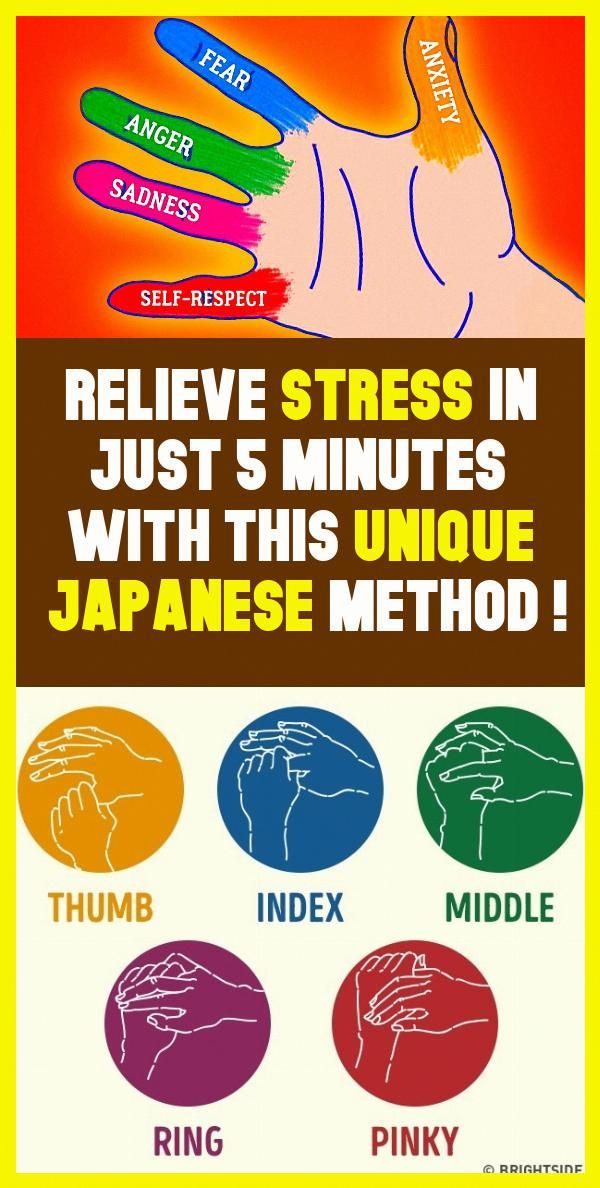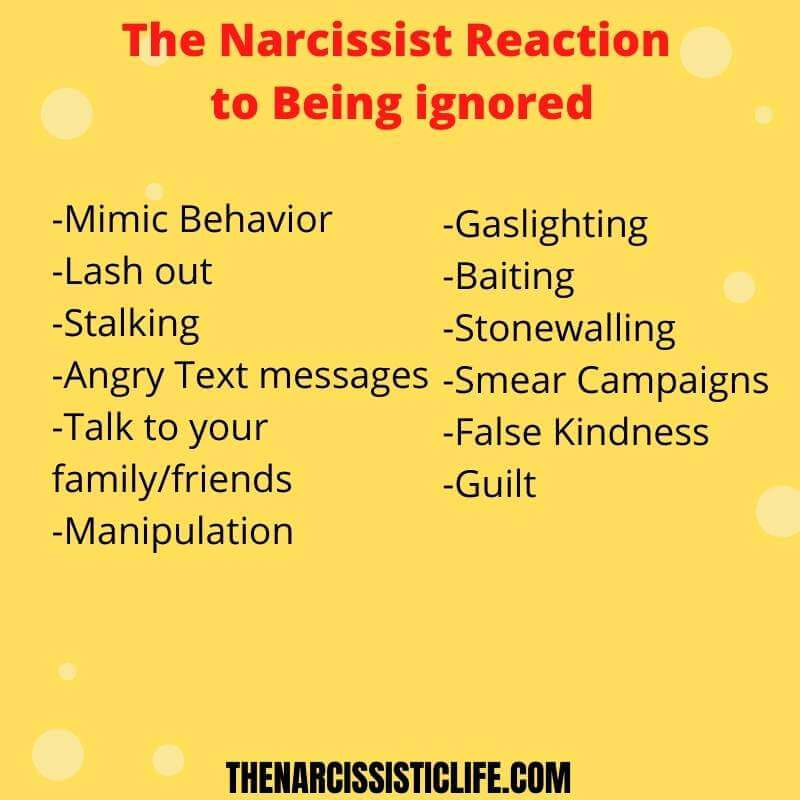Kahler personality types test
The Process Communication Profile Assessment Test
The Process Communication Profile Assessment is used to test the personality styles of individuals. Developed by Dr. Taibi Kahler in 1972 and has since been used worldwide. This helps communication flow more effectively through workplaces and other spaces where individuals might be vastly different. Businesses and companies across the world use this assessment to match employees with the proper positions within their companies.
Used for a variety of reasons, not just for businesses, but also for those who want to learn to sell or effectively communicate in stressful situations. The assessment covers six different personality styles. Taking the test lets you know which style you fall under.
The Six Personalities of the Process Communication Assessment Test?
This assessment tells you which personalities you most identify with when you take it. Here is a bit more on each of the personalities to expect, and don't be surprised if you fall between a couple of the categories.
1. Thinker
The thinkers are logical and responsible. They take the logical approach to everything from their home life to work. These individuals have that little voice in their head that states they have to be perfect in all areas of their lives. Might feel like they need to have control over every little thing.
2. Harmonizer
You are sensitive and compassionate. This is a person who is intuitively good with other people. They are warm and welcoming. They generally smile even if you're a stranger and sometimes even use touch to smooth over a situation. They have modesty and humility.
3. Persister
These individuals are observant and dedicated. They have a voice that oftentimes will question everything that the person does because they want everything to be 'just right.' They don't trust easily and they often won't take others' opinions lightly.
4. Rebel
The creative, spontaneous rebel is what many of us want to be. How good is the person's humor? Usually, rebels have a great sense of humor. They also put their responsibilities on others. They tend to provoke fights if they do not want to do something they're supposed to be doing.
How good is the person's humor? Usually, rebels have a great sense of humor. They also put their responsibilities on others. They tend to provoke fights if they do not want to do something they're supposed to be doing.
5. Imaginer
Calm and reflective is what is known from an imaginer. These individuals do not enjoy being social and mingling, but would rather be alone. They do not sneak up on people and will be polite when entering a room. They are excellent at observing others, and this makes them ideal for providing the appropriate feedback, as they reflect on conversations before replying.
6. Promoter
Resourceful and charming, the promoter is able to sell the shirt right off your own back. They love thrills and risk-taking, and they are not good with sitting around all day and not making deals. They are direct with what they say and persuasive at the same time. Their can-do attitude manipulates those around them.
Sample Question From a Process Communication Profile Assessment
The questions are all based on how you deliver and receive communication.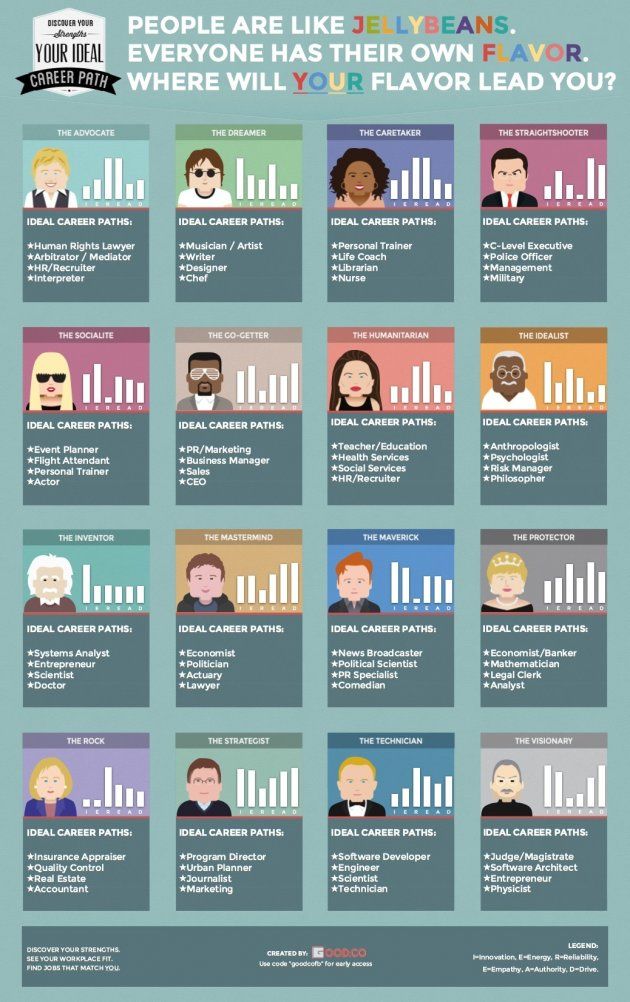 These questions will ask you to describe where communication is coming from, how you'd deliver the same message, and how you'd understand or perceive specific examples.
These questions will ask you to describe where communication is coming from, how you'd deliver the same message, and how you'd understand or perceive specific examples.
The questions change and are scored by placing points in each of the six personality styles. Once the test taker completes the test, the points are tallied up and the section with the most tallies or points would be the personality that you most closely relate with.
Benefits of the Process Communication Profile Assessment
There are many benefits that come with the Process Communication Profile. Here are some of the benefits, in case you are thinking of using this specific model.
-
It helps with clear, more concise communication practices
-
Successfully manage relationships
-
Have a better home and work-life overall
-
Learning more about the positive character traits of others around us
-
Better for fitting employees with specific positions in a company
Personality Quiz
Home Your Problems Types of Therapy Testimonials First Appointment & Fees Directions Contact
david
lloyd-
MBACP (Accredited)
Bsc(Hons)
helping you
to help yourself
This is the first of a number of quizzes in which you can find out a little more about yourself and the way you function in the world.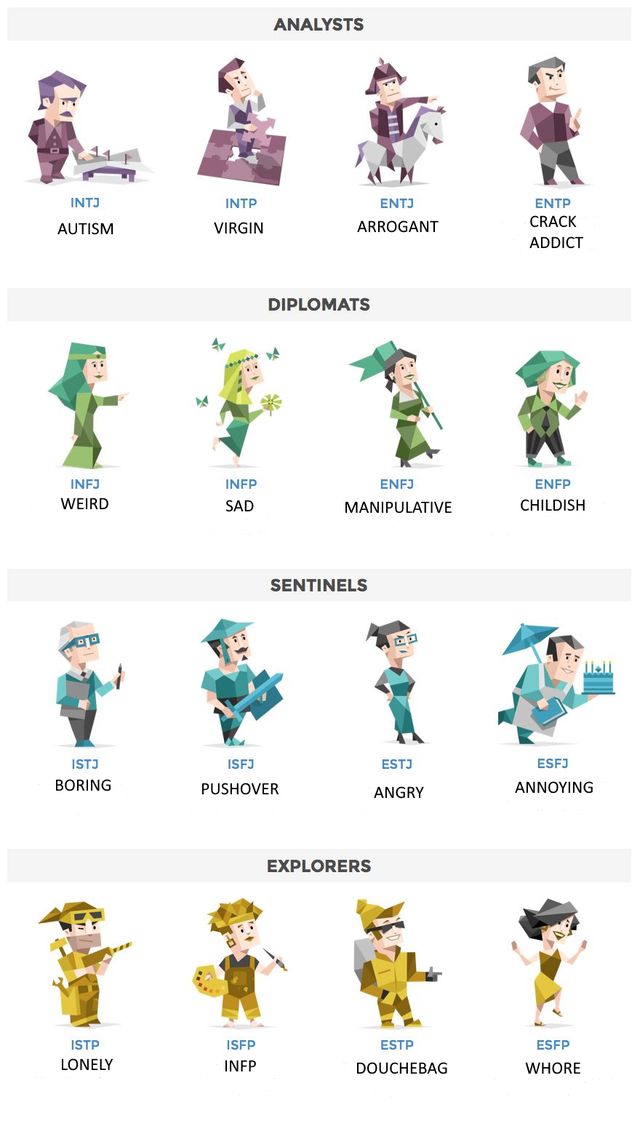 It’s important for you to know that any conclusion that you may come to when completing an exercise of this nature can only be a guideline. In this first quiz I invite you to look at the way in you communicate, and the way you would prefer people to communicate with you. You’ll also discover new ways of making contact with people, and be able to read a general description of your personality type.
It’s important for you to know that any conclusion that you may come to when completing an exercise of this nature can only be a guideline. In this first quiz I invite you to look at the way in you communicate, and the way you would prefer people to communicate with you. You’ll also discover new ways of making contact with people, and be able to read a general description of your personality type.
Quiz 1-
The Communication Process Model
Introduction
This model (Taibi Kahler’s) is concerned with the initial approach of one person to another. It increases awareness and options in making contact, and is therefore particularly valuable for teachers, counsellors, sales people, market researchers and such like. It will help prevent the all too common feeling of having got off on the wrong foot or failed to make contact with someone.
How People Make Contact
When you first communicate with someone else, they can be contacted through one of three modes:
- Feeling
- Thinking
- Behaviour
- Feeling: An example of such an approach might be "It’s lovely to see you”, or "I'm so glad to meet you, I’ve heard so much about you"
- Thinking: An example of this as an opening approach might be “How did You get on with that problem today?" or "Any more news from your architect?"
- Behaviour: If on meeting someone we said, "Let's go for a walk and we can talk on the way", or "What do you want to drink?”, we are operating in the behaviour mode.
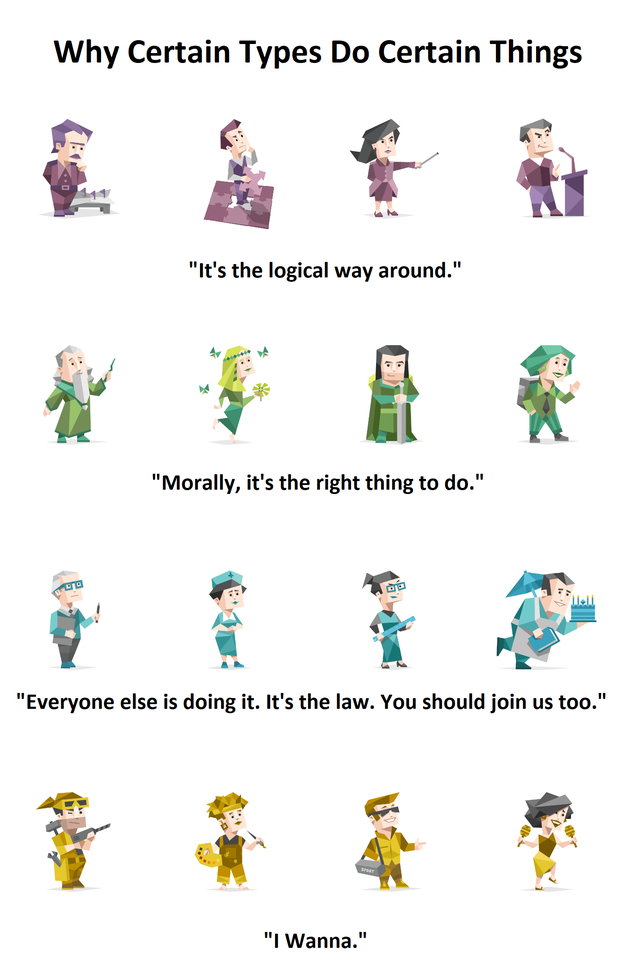
Therefore, we can invite people to respond to us initially from a thinking state, from a piece of behaviour or action, or from their feelings. If we sense that we have not really hit it off with someone, then probably we have used a wrong contact mode, or more accurately a mode with which the other person feels uncomfortable.
Assessing Individual Preference
How can we know what contact point people prefer? Kahler used the following device.
You can complete the device for yourself by firstly considering how you generally are in your life on the active -
Secondly, consider how you generally are in your life on the involving or withdrawing scale, similarly putting two marks on the horizontal line to show your general range of behaviour. Therefore, if you tend to behave in a very involved way in relationships, both at work and socially, then your marks will be to the left. If when with people you keep yourself to yourself and do not get involved unless really invited to by others, then your marks will be to the right.
On both the vertical and horizontal lines, neither end is better than the other is.
Now join up the four points to form a four-
You will generally have part of your figure in all four quadrants but one quadrant is likely to contain a larger share than others, and one or two may have a very small share. We can now relate this model to the Thinking -
Quadrant 1: Withdrawn -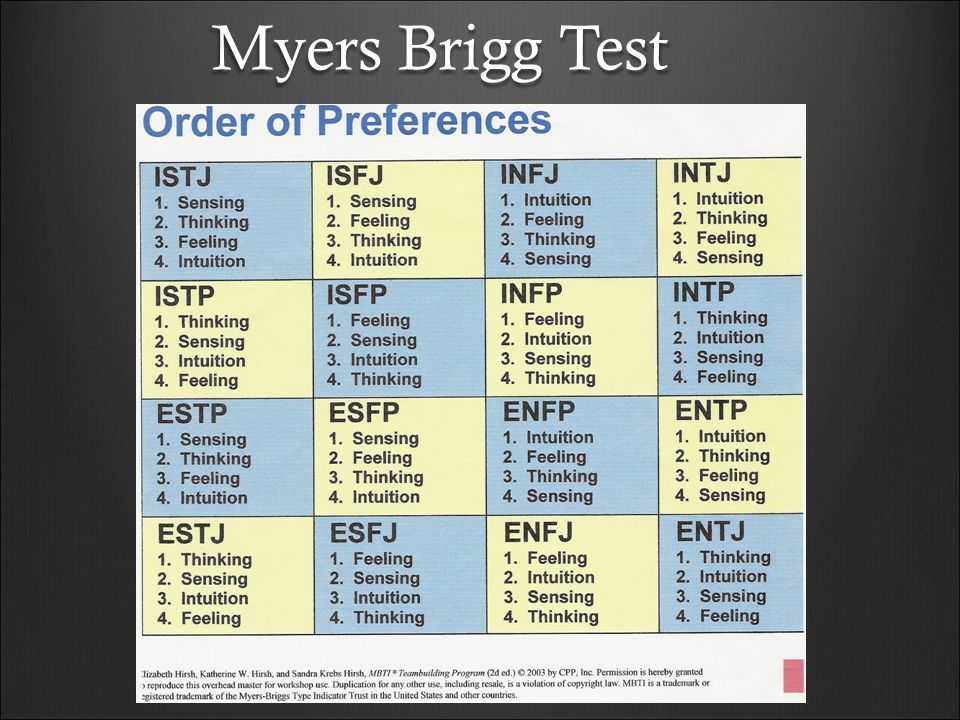
Quadrant 2: Withdrawn -
Quadrant 3: Involving -
Quadrant 4: Involving -
It is important to note that nearly all people can activate other modes than their dominant one when it is necessary. What we are talking about here is the most comfortable mode for initial contact.
The Importance of Initial Contact
Even though we will move through a full repertoire of rich expression of feelings, thinking and behaviour in any conversation, getting the initial contact right is critical. Just as a high point of stress is for the actor as she speaks her first words, for the musician as he plays his first note, for the novelist as she writes the first word on a blank page, so it is with human contact when the first words are spoken. They can set the subsequent interaction off well or badly.
They can set the subsequent interaction off well or badly.
So if we went to speak to someone who was very strong in Quadrant 2 (Withdrawn -
After the Initial Contact
The initial contact can be very brief before moving into another mode. Thus one might say, "Hello, are you feeling better today? Good. Now I'd like your opinion on this report.” Another therapist, Paul Ware, has suggested that there is a natural progression from the contact point to what he calls the target, by which he means the mode of getting into full and extended communication. He also described what he called 'the trap', which is the mode that is likely to panic or turn off the recipient if it is activated too early.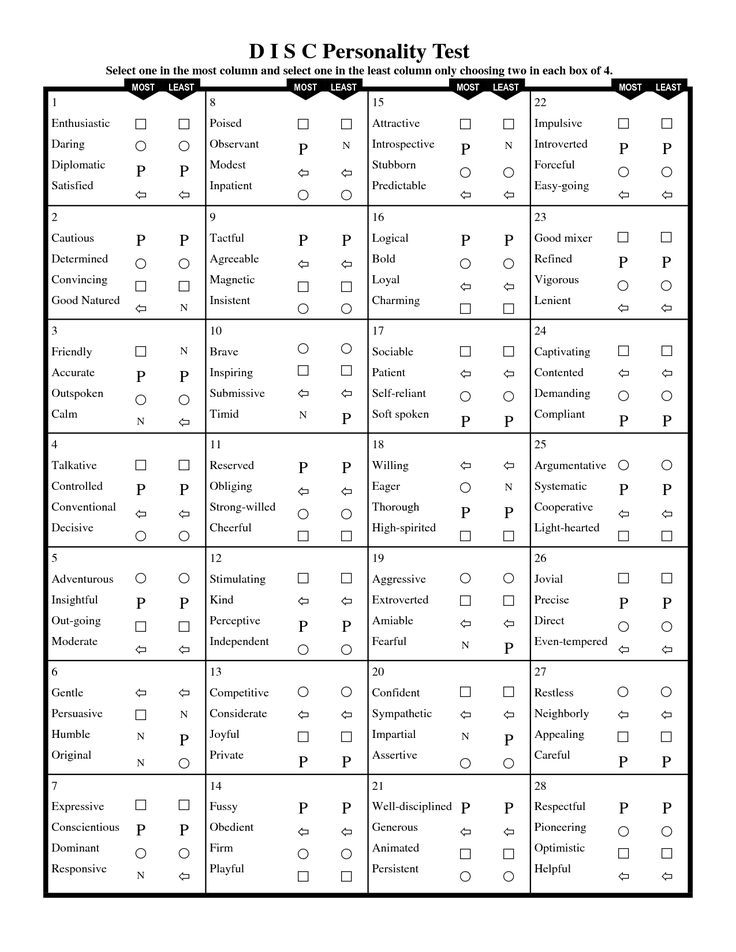 His sequence theory is as follows:
His sequence theory is as follows:
Quadrant Contact Target Trap
1. Active -
2. Passive -
3. Passive -
4. Active -
If it helps your thinking you can apply the following names to each of the quadrants. If it doesn't, don't.
- Quadrant 1 Active – Withdrawing ~ Workaholics
- Quadrant 2 Passive – Withdrawing ~ Day Dreamers
- Quadrant 3 Passive – Involvers ~ Rebels
- Quadrant 4 Active – Involvers ~ Over-
reactors
What does this mean when we interact with other people? What would improve the quality of Communication?
If you believe you are dealing with a workaholic, then an initial approach is through her thinking mode.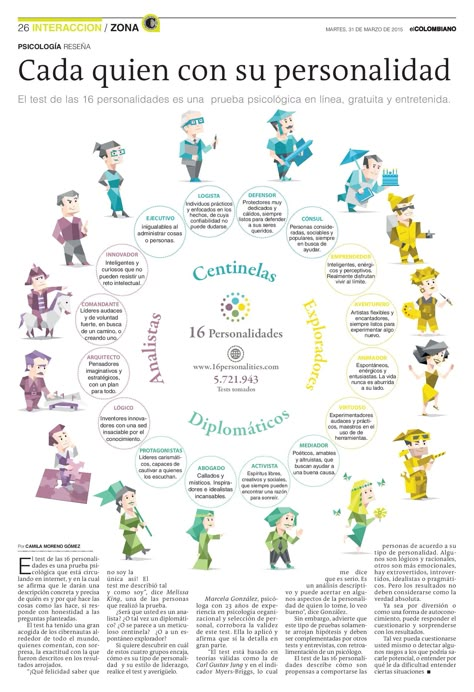 She needs her mind given respect, her ideas listened to, and only then when she is confident with you at that level, can you switch into a feeling mode. For counselling or therapy that may be an important move, but for many purposes it is unnecessary to move from the comfortable mode of thinking. What she dislikes is feeling cornered, crowded or pressured. She will be anxious to talk but also to keep her distance, and will not like casual physical contact or taking part in “party games”. She is likely to be driven by the need to get everything exactly right and this will be apparent in her speech patterns and probably her appearance. She is likely to live a life, which denies her any rewards, or relaxation until earned by hard work and completion of the task.
She needs her mind given respect, her ideas listened to, and only then when she is confident with you at that level, can you switch into a feeling mode. For counselling or therapy that may be an important move, but for many purposes it is unnecessary to move from the comfortable mode of thinking. What she dislikes is feeling cornered, crowded or pressured. She will be anxious to talk but also to keep her distance, and will not like casual physical contact or taking part in “party games”. She is likely to be driven by the need to get everything exactly right and this will be apparent in her speech patterns and probably her appearance. She is likely to live a life, which denies her any rewards, or relaxation until earned by hard work and completion of the task.
If you are dealing with a daydreamer, then a very gentle non-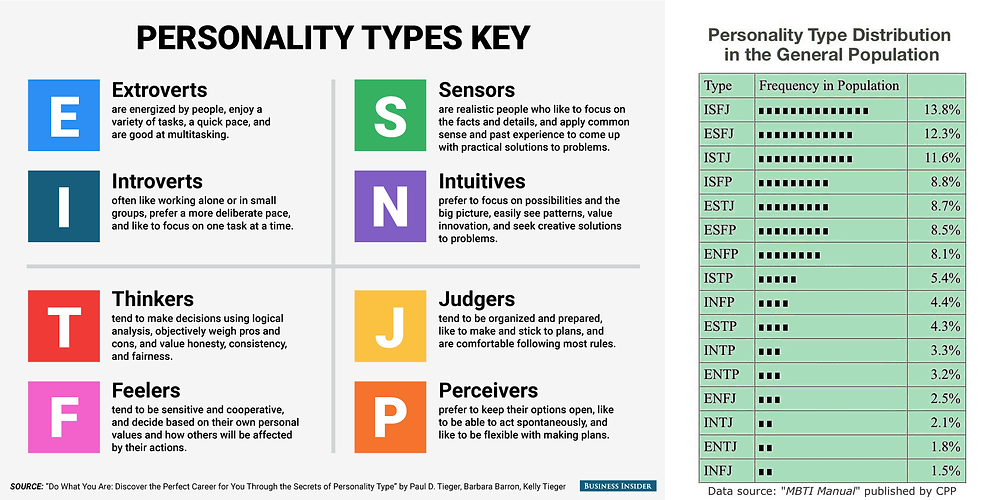 He never seems to achieve anything that he really wants. From a low-
He never seems to achieve anything that he really wants. From a low-
The rebel has been alternately described as the Charming Manipulator. She needs to be contacted through active behaviour and particularly by some form of play. Once she is relaxed with a drink, a car-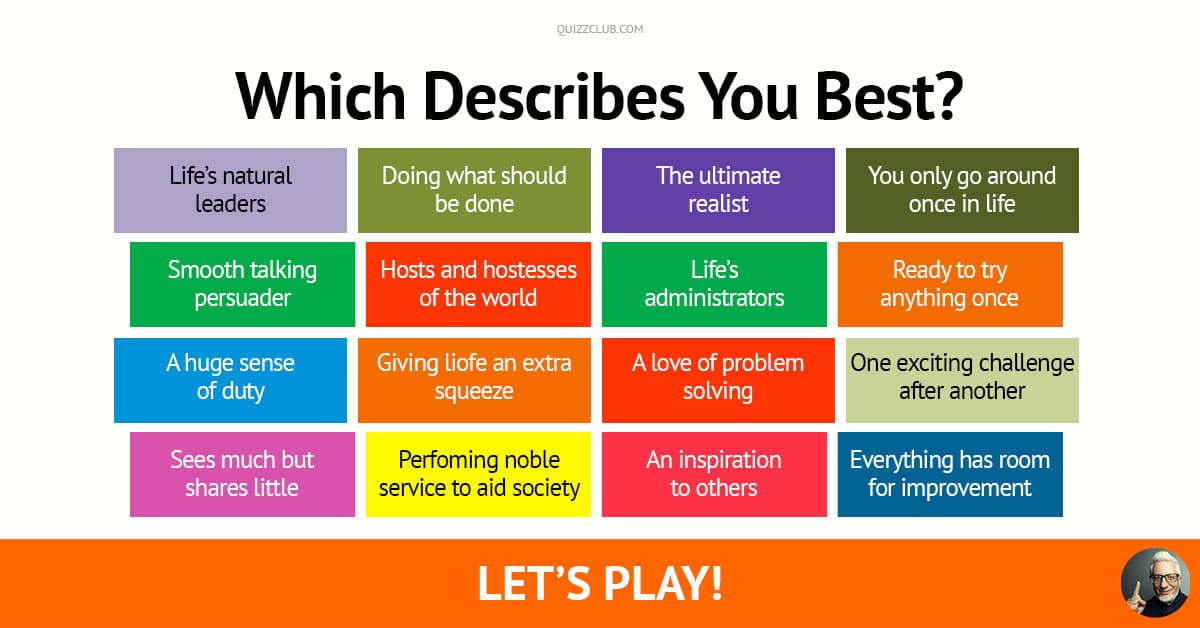
The over-
These, of course, are model types, and none of us conforms to the extremes. We have a strong or weaker tendency to be like one of the types with a secondary type also fairly strong in many of us. This process model gives a way into communication but once well into the interaction then it is likely to be fuller, more complex and various then the model can usefully handle. In practice it means I might approach people in the following different ways.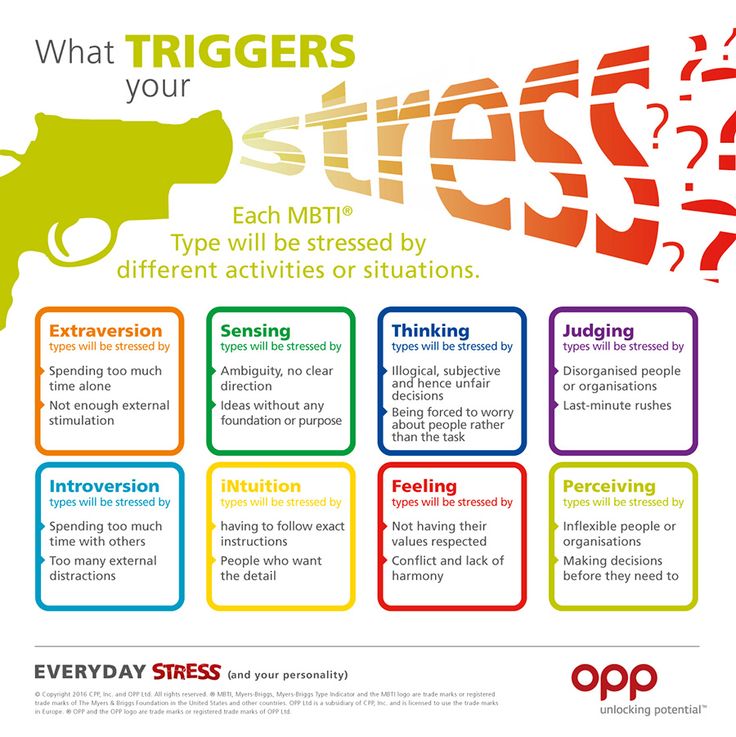
Person 1 (Quietly) Hello, how would you like a quiet stroll round the garden? (Silences) Isn’t that a marvellous bush? (Silences). It’s so peaceful here away from the traffic. (Silences). I wonder if you have had any thought about that proposal I put the other night? (Quadrant 2).
Person 2. (Warmly). How lovely to see you. How are you feeling? You' re really looking relaxed nowadays. I want to talk to you about something that is really exciting me, and I would enjoy it very much if you could work with me on it. Let me explain it to you. (Quadrant 4).
Person 3. (Seriously). Hello. I've had another idea about that matter we were talking about last night. This is it. (Explains) Do you feel that’s worth following up? You may be a bit tired after the last weeks crisis. How do you feel about it? (Quadrant 1).
Person 4. (Loudly). Hey, Bill. Great to see you, good excuse for a drink. Lets push through the crowd to that seat over there. You get a really good view of the river.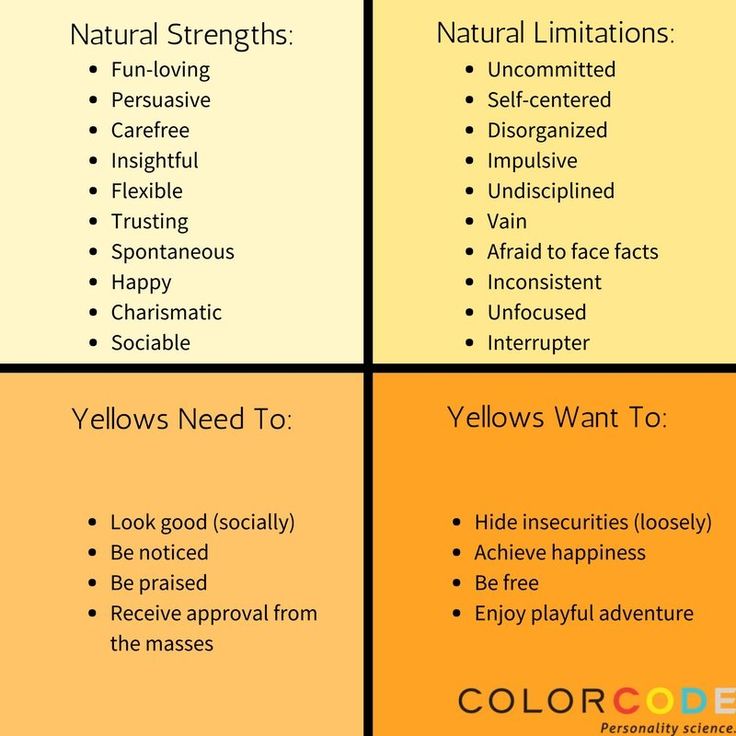 Now, how are you feeling? You’re looking a bit down. (Quadrant 3).
Now, how are you feeling? You’re looking a bit down. (Quadrant 3).
Of course the skill is in correctly deciding what kind of person you are talking to, which is easy with people you know, and not that difficult with others if careful observation and the principles of the process model are combined. More of that in Quiz 2
What this model does enable us to consider is what we actually do say after we say hello!
Back To The Homepage
Back To The Top Of The Page
How To Make An Appointment -
Tweet
1996 Mindscape Limited
Designed By David Lloyd-
@en
Counsellor Paignton and Torquay Homepage
Therapy Offered by Counsellor in Paignton and Torquay
Your Problems Help Pages
Choosing a Counsellor in Paignton and Torquay
About David Hoare
First Appointment with Counsellor Paignton and Torquay
Online Counselling Shop
Testimonials about Counsellor in Paignton and Torquay
Personality Quiz
Directions to Counsellor in Paignton and Torquay
Counselling Articles
Counselling Supervision in Paignton and Torquay
Medication Advice
Suicide Help and Advice
Contact Counsellor in Paignton and Torquay
Disclaimer
Relationship Problems Panic & Anxiety Stress Anger Problems Depression Alcohol Problems Drug Addiction Low Self-Esteem & Assertiveness Sexual Abuse Sexual Problems Family Problems Bereavement Phobia & Fear Eating Disorders Obsessive Compulsive Disorders Abuse No Motivation or Confusion Loneliness Illness You Can Quit Smoking Fear of Flying Insomnia Other Problems Suicide
Relaxation
Ritual Abuse
Cognitive Behavioural Therapy EFT & TFT EMDR Gestalt Therapy Hypnotherapy Neuro Linguistic Programming Person Centred Counselling Psychodynamic Therapy Psychosynthesis Transactional Analysis Behavioural Couples Therapy Relationship Counselling Medication Counselling Articles
Counselling Articles Archives
Personality Quiz Counselling Articles Archive 1
Online Payment Choosing a Counsellor About David Hoare
Qualifications Charity Donations
BACP Accreditation Ethics of Counselling
personality test - 16 personality types test
thinker - analyzes problems in depth
You are always trying to find a logical explanation for what interests you.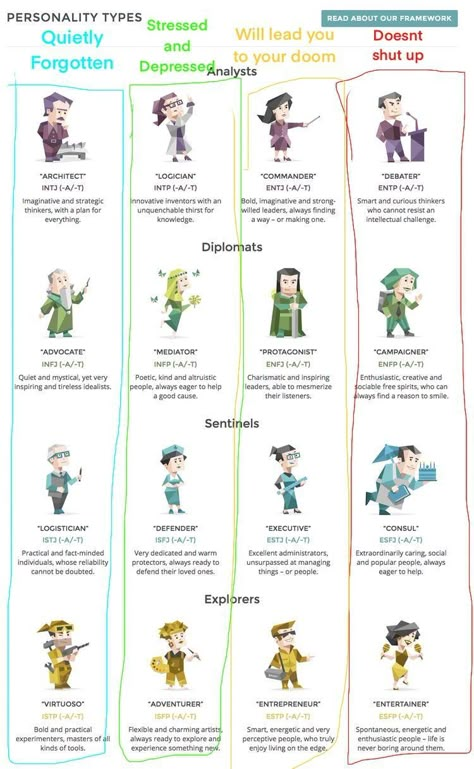 You love abstract and theoretical things. You are more interested in recognition than in social interaction with people. You are calm, reserved, flexible and tolerant. You have an extraordinary capacity for deep research. You are quite skeptical, so you always analyze problems. Sometimes you are too harsh and ruthless. nine0003
You love abstract and theoretical things. You are more interested in recognition than in social interaction with people. You are calm, reserved, flexible and tolerant. You have an extraordinary capacity for deep research. You are quite skeptical, so you always analyze problems. Sometimes you are too harsh and ruthless. nine0003
INTP famous person: Albert Einstein, physicist
Prophet - Turning ideas into people's desires
You are active, intelligent, alert, direct and able to motivate other people. You can mobilize all resources to solve new complex problems. You know how to find strengths and opportunities in yourself and analyze them with the help of strategic thinking. You have a strong ability to analyze people's behavior. You are not satisfied with the ordinary life. You rarely do the same. You are into a wide variety of things. nine0003
ENTP famous person: Socrates, philosopher.
Performer - Everything is under control
You are honest and decisive, you have natural leadership qualities.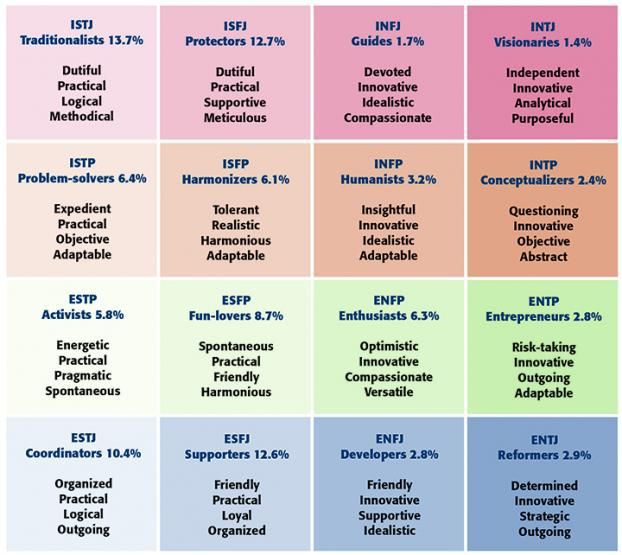 You can quickly spot counterintuitive and inefficient practices and procedures. You can constantly add and develop a new system to solve organizational problems. You like to make a long-term plan for yourself and stick to it. You are well informed, you have a wide outlook. You enjoy sharing your knowledge with others. nine0003
You can quickly spot counterintuitive and inefficient practices and procedures. You can constantly add and develop a new system to solve organizational problems. You like to make a long-term plan for yourself and stick to it. You are well informed, you have a wide outlook. You enjoy sharing your knowledge with others. nine0003
INTJ famous person: Napoleon Bonaparte, emperor
Expert - Unique and striving for perfection
You have a lot of creative thoughts. You are always trying to bring your ideas to life, tirelessly achieving your goal. You can understand the connotative model of the outside world and think long term. When you make a commitment, you make a plan and stick to it. You are very independent and skeptical. You always have a high standard, whether it's for you or for other people. nine0003
INTJ famous person: Isaac Newton, physicist.
Protagonist - Maximizing the potential of everyone
You are responsible, caring and compassionate. You can be acutely sensitive to the emotions, needs, and motivations of others. You can find potential in other people and want to help them discover it. You always contribute to the development and growth of the team. You are very sensitive to praise and criticism. You are loyal to everyone, have a good social background and cooperate well with other people. You are an inspiring leader who can motivate others well. nine0003
You can find potential in other people and want to help them discover it. You always contribute to the development and growth of the team. You are very sensitive to praise and criticism. You are loyal to everyone, have a good social background and cooperate well with other people. You are an inspiring leader who can motivate others well. nine0003
ENFJ famous person: Martin Luther King Jr., civil rights activist.
Lawyer - A flash of light in pitch darkness
You always want to find deep meaning in your thoughts, relationships with other people and in material life. You are trying to understand the motives of other people and have a clear idea about people. You are very meticulous in what you do and true to your values. Your vision is to provide the best service for all people. By achieving this goal, you can remain bold, determined, and organized. nine0003
INFJ famous person: Plato, philosopher.
Counselor - Everything is possible
Life is full of possibilities for you.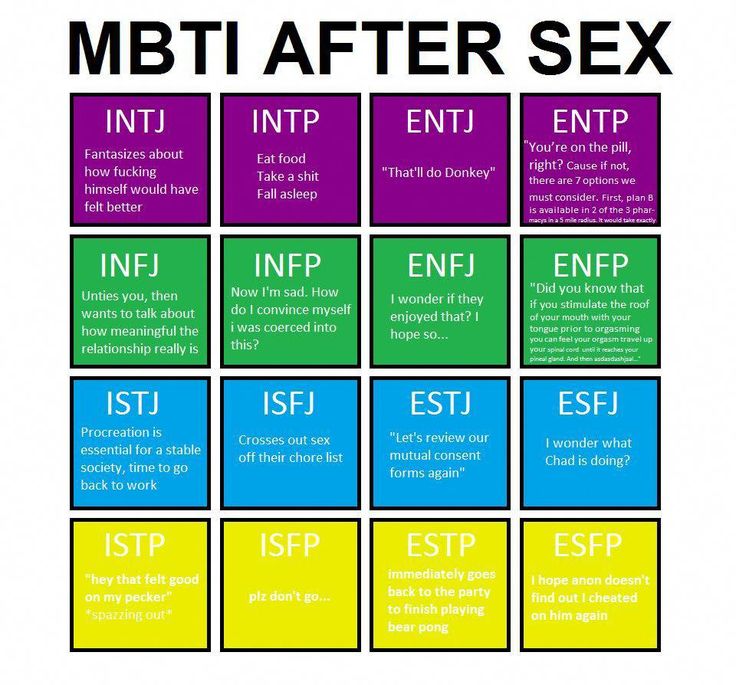 You can quickly find connections between all kinds of information and confidently work according to the patterns you find. You strive to get approval from other people, and you are also quite serious about the praise and support of other people. You are very laid back and flexible. You are gifted with rare eloquence and the ability to improvise.
You can quickly find connections between all kinds of information and confidently work according to the patterns you find. You strive to get approval from other people, and you are also quite serious about the praise and support of other people. You are very laid back and flexible. You are gifted with rare eloquence and the ability to improvise.
ENFP famous person: Tom Hanks, American actor
Philosopher - Living in your own ideal world
You are an idealist. You are true to your values and the people who matter to you. You hope that you can live in a world that exactly matches your values. You are very open to new things. You can always find opportunities to encourage yourself and other people to bring any idea to life. You are trying to understand other people and help them reach their potential. When nothing threatens your values, you are quite flexible and understand other people well. nine0003
INFP famous person: J.K. Rowling - author of the Harry Potter series
Man of action - Boundless energy to solve problems
You are quite laid-back and open.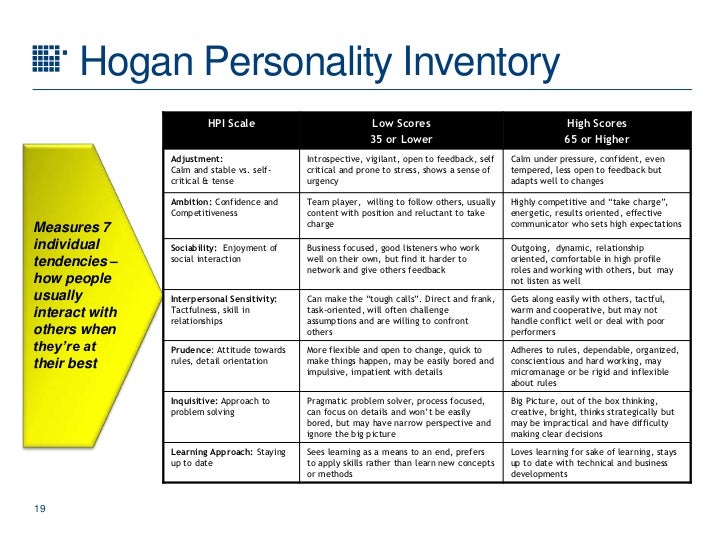 You enjoy solving practical problems and your solutions have an immediate impact. You are bored with theory and concepts. For you, the current moment with a natural course is important. You enjoy every minute when you are with other people. You also enjoy the pleasure and comfort provided by the material world. You like to learn by doing. nine0003
You enjoy solving practical problems and your solutions have an immediate impact. You are bored with theory and concepts. For you, the current moment with a natural course is important. You enjoy every minute when you are with other people. You also enjoy the pleasure and comfort provided by the material world. You like to learn by doing. nine0003
ESTP famous person: George Bush
Craftsman - Observe calmly, act quickly
You are very patient and flexible. Normally you watch quietly, but when there is a problem, you try to find a solution as quickly as possible. You are always analyzing how things could be more efficient and solving practical problems based on extensive data. You are very interested in the causes and effects of things. You systematize the facts, guided by objective logical principles. You attach great importance to efficiency. nine0003
ISTP celebrity: Steve Jobs, founder of Apple
Actor - Life is your stage
You are sociable, friendly and open.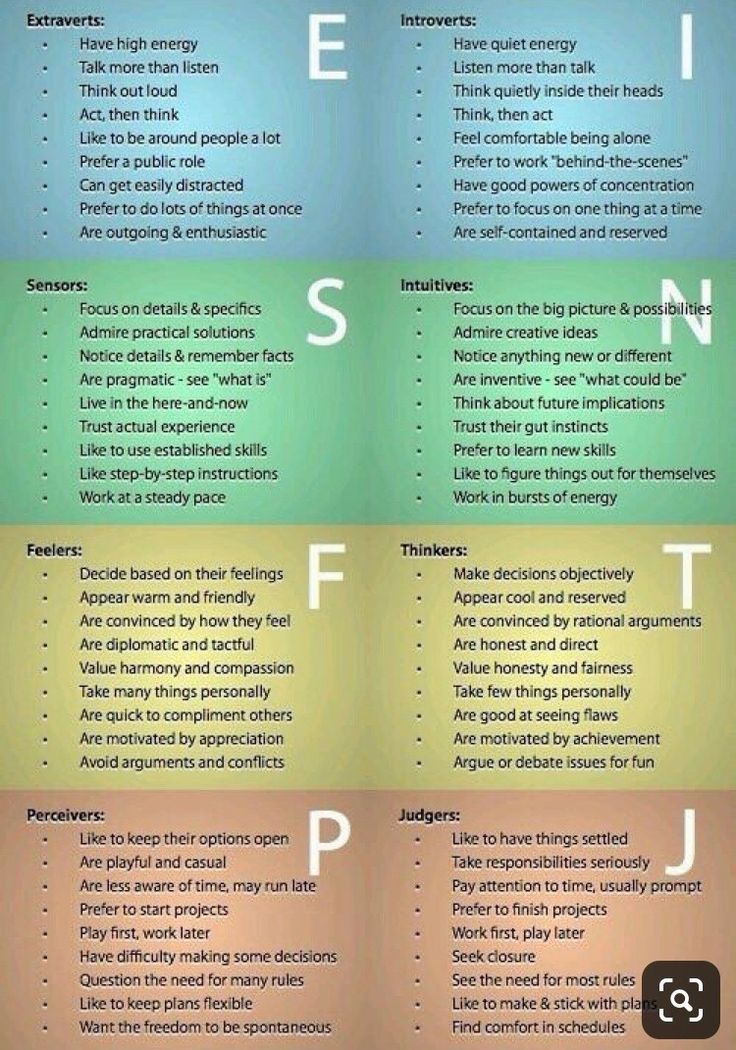 You love your life very much and enjoy the comforts of the material world. You like to create something new with other people. You bring your perception and practical attitude to your work, which means that your work is done with pleasure. You are very at ease. You quickly adapt. When you collaborate with other people, you can very quickly learn from the experience of others and learn new things. nine0003
You love your life very much and enjoy the comforts of the material world. You like to create something new with other people. You bring your perception and practical attitude to your work, which means that your work is done with pleasure. You are very at ease. You quickly adapt. When you collaborate with other people, you can very quickly learn from the experience of others and learn new things. nine0003
ESFP celebrity: Leonardo DiCaprio, actor
Artist - Show your accomplishments so everyone can see the richness of your inner world
You are calm, friendly, empathetic and gentle. You live in the moment and enjoy everything that happens around you. You love privacy when you can do things on your own schedule and at your own pace. You are true to your heart and loyal to the people who matter to you. You do not like conflicts and contradictions. You do not impose your thoughts and values on other people
ISFP celebrity: Lady Gaga, singer-songwriter
Administrator - Ensuring smooth and orderly work
You are very practical and realistic.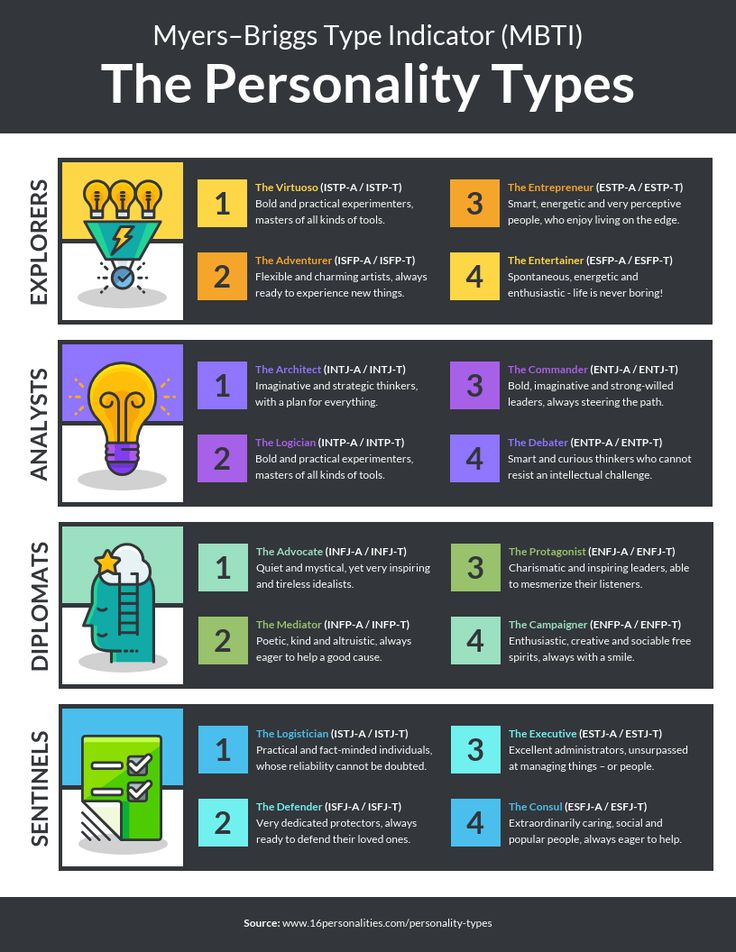 You are also firm and determined. Once you make a decision, you will immediately take action. You know how to deploy projects and mobilize all the resources and people to complete them. You hope that you can achieve your goals in the most efficient way possible. You can handle everyday details well. You have your own clear and logical understanding of how it should be, and you will always insist on your own. You will always stick to your opinion unswervingly. nine0003
You are also firm and determined. Once you make a decision, you will immediately take action. You know how to deploy projects and mobilize all the resources and people to complete them. You hope that you can achieve your goals in the most efficient way possible. You can handle everyday details well. You have your own clear and logical understanding of how it should be, and you will always insist on your own. You will always stick to your opinion unswervingly. nine0003
ESTJ famous person: Emma Watson, actress
Logistician - Act in accordance with existing rules, scrupulously and carefully
You are calm and serious. People like you because of your honesty and attentiveness. You are realistic, pragmatic and purposeful. You decide what you should do independently and rationally, and then you achieve your goals step by step, without distraction. You like to put things in order. Whether you are at work, at home or in your daily life, you will pay a lot of attention to traditions and rules.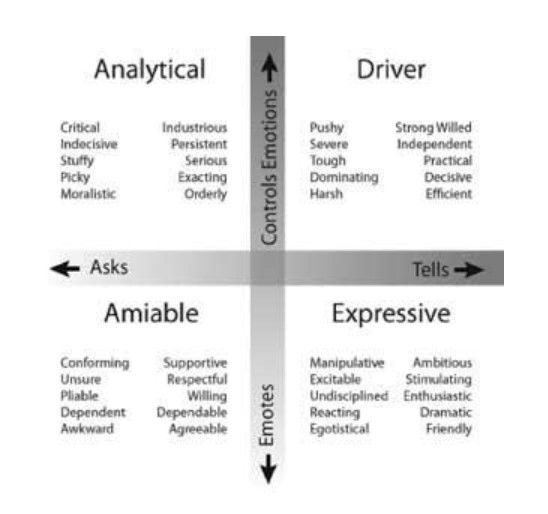 nine0003
nine0003
ISTJ celebrity: George Washington, US President and General
Caretaker - Enthusiastic about helping others
You are kind, meticulous, and cooperative. You strive for a harmonious atmosphere and try to create such an environment around you. You enjoy doing tasks with other people. You are always loyal and consciously care about other people. You notice all the needs of other people in their daily lives and try your best to satisfy them. You hope that other people will appreciate everything you do for them. nine0003
ESFJ famous person: Anne Hathaway, actress
Keeper - Unlimited concern for others
You are calm, affable, responsible and serious. You will always be able to consistently and reliably complete your tasks. When you are dealing with important things, you are strict, careful and accurate. You are very loyal and considerate. You notice and remember all the details that are important to you. You care about other people's feelings with all your heart. Both in life and at work, you strive to make the environment peaceful and harmonious. nine0003
Both in life and at work, you strive to make the environment peaceful and harmonious. nine0003
ISFJ famous person: Prince Charles, Royal representative of Great Britain, married to Camilla Parker Bowles, was married to Diana, son of Elizabeth II, father of William and Harry.
Important: The purpose of this test is to reveal your innate tendencies. It's like asking if you're right-handed or left-handed. The percentages in the figure only show how sure you are of being right-handed or left-handed when you take the test. Every person has their own inclination towards character. Some trends may be obvious and some may not. Once your character type is confirmed, percentages aren't that important. You can't say I'm 80% introvert, just like you can't say I'm 80% left-handed. There are no good or bad characteristics. Such a test is not to label oneself, but to develop one's good traits and control over shortcomings. nine0003
why tests can't determine your psychological type - Monoclair
Filed under: Latest articles, Psychology
Did you find something useful here? Help us stay free, independent, and free by making any donation or purchasing some of our literary merchandise.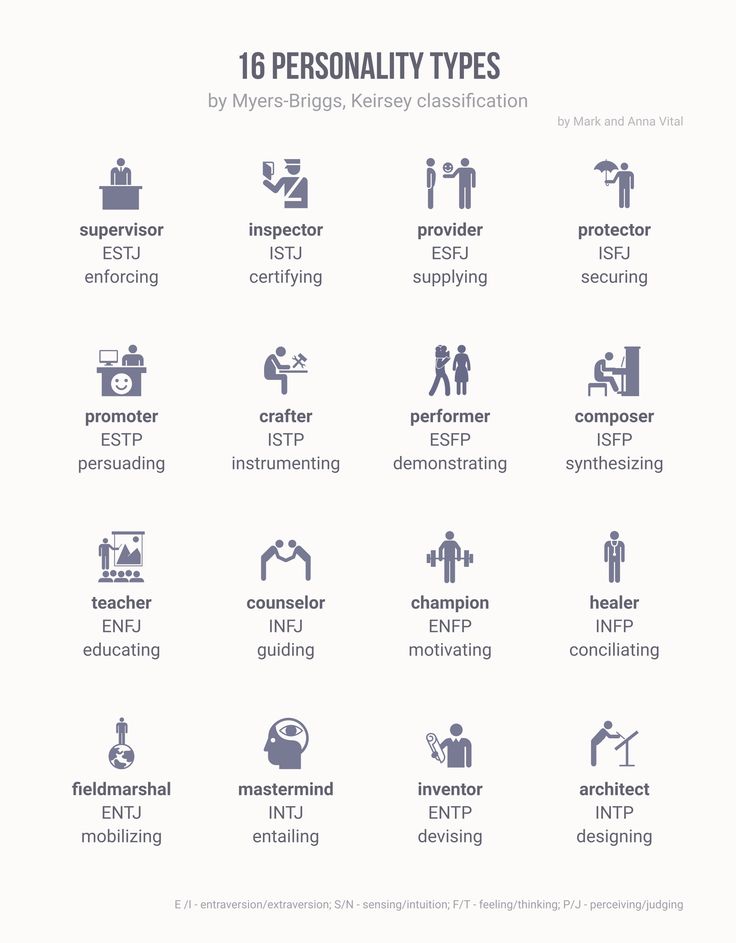
We are publishing a chapter from The Flexible Personality (MIF), where Benjamin Hardy, PhD in Organizational Psychology, explains why the popular idea of static personality types does not work, how the labels that we hang on ourselves limit us (and when they can still come in handy) and what five factors really matter for a person's understanding of himself and his actions. nine0109
Are personality traits really fixed, and tests can determine our type? Psychology doctor Benjamin Hardy, who has studied a solid layer of literature on the topic, including recent studies, is sure that this is not so.
Moreover, in his book "The Flexible Personality", published by MIF, he consistently proves that personality traits are not the main thing. In his opinion, this is just “a by-product of what is happening deeper,” and the most important aspect of human nature is the ability to make choices and stay true to them, which Viktor Frankl once called the last freedom of man. nine0003
nine0003
“This requires at least two basic actions: making decisions about what should happen and choosing how to react to what happens. It is the ability to choose that makes us human. And the more decisions you make yourself, the more control over your life <…>. We are not born with certain traits, we develop them. They can and do change. They can and should be chosen and nurtured in oneself. Choosing your own path is the main goal of our life. But we are afraid of this, because any choice implies consequences.” nine0003
We have selected a chapter from a book in which Hardy reflects on why the popular idea of unchanging personality types harms development and limits our opportunities, while being aware of the constancy of change and focusing on the future, not the past, allows us to be more free to choose reactions and behaviors and more open to the world and new experiences.
Myth No. 1. There are certain personality types
There are no pure extroverts or introverts.
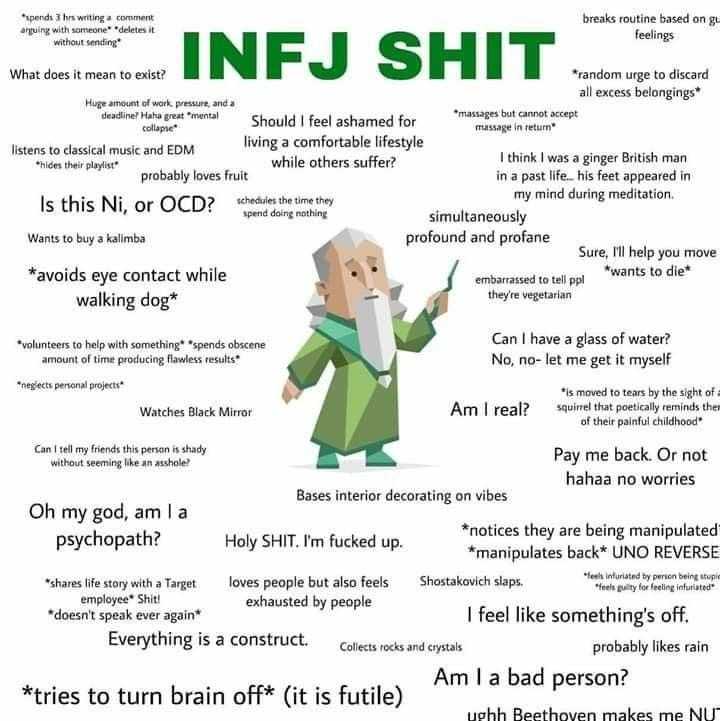 Such a person would be insane. nine0125 Dr. Carl Jung (18)
Such a person would be insane. nine0125 Dr. Carl Jung (18) There are two types of people in the world: those who believe in the existence of two types of people and those who do not.
However, according to the Myers-Briggs classification, people are divided into sixteen types.
But wait, according to the revised NEO Personality Inventory, there are only six types of people in the world.
And I divide all people into four types: Hufflepuffs, Gryffindors, Slytherins and Ravenclaws.
So, what does it give? nine0003
How many types of people are there in the world? Two? Four? Six? Or sixteen?
The first myth about personality is that there are personality types. There are none. These are social models, invented schemes that do not exist in reality. It is a superficial, discriminatory, dehumanizing and highly inaccurate view of the complex organization of the human being.
The idea of personality types has no scientific basis, and most of the popular personality tests were created by people who had no right to divide people into groups.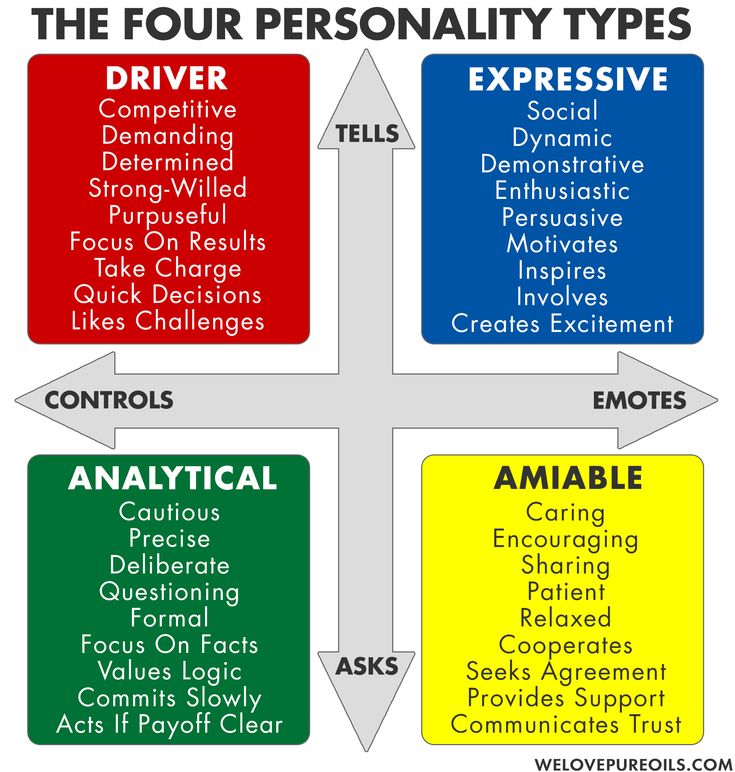 Dr. Merv Emre, author of the 2018 book The Personality Assessors (19), explains that personality testing has become a two billion dollar industry, with Myers-Briggs being the most popular test. It is interesting to note that neither Katherine Briggs nor her daughter Isabelle Myers studied psychology, psychiatry, or test writing. None of them worked in a scientific laboratory or institute. Since women did not have the opportunity to work at the university or in a scientific laboratory, the authors of the typology worked at home.
Dr. Merv Emre, author of the 2018 book The Personality Assessors (19), explains that personality testing has become a two billion dollar industry, with Myers-Briggs being the most popular test. It is interesting to note that neither Katherine Briggs nor her daughter Isabelle Myers studied psychology, psychiatry, or test writing. None of them worked in a scientific laboratory or institute. Since women did not have the opportunity to work at the university or in a scientific laboratory, the authors of the typology worked at home.
In developing her theories at the beginning of the 20th century, Catherine Briggs drew on her own experience as a wife and mother, and not on the experience of a scientist or psychologist. Since she and her husband had different attitudes towards life, and one child was less sociable than the other, she needed a system that took into account social nuances. nine0003
According to Briggs, it is psychologically incredibly difficult for a person to solve the problem of incompatibility.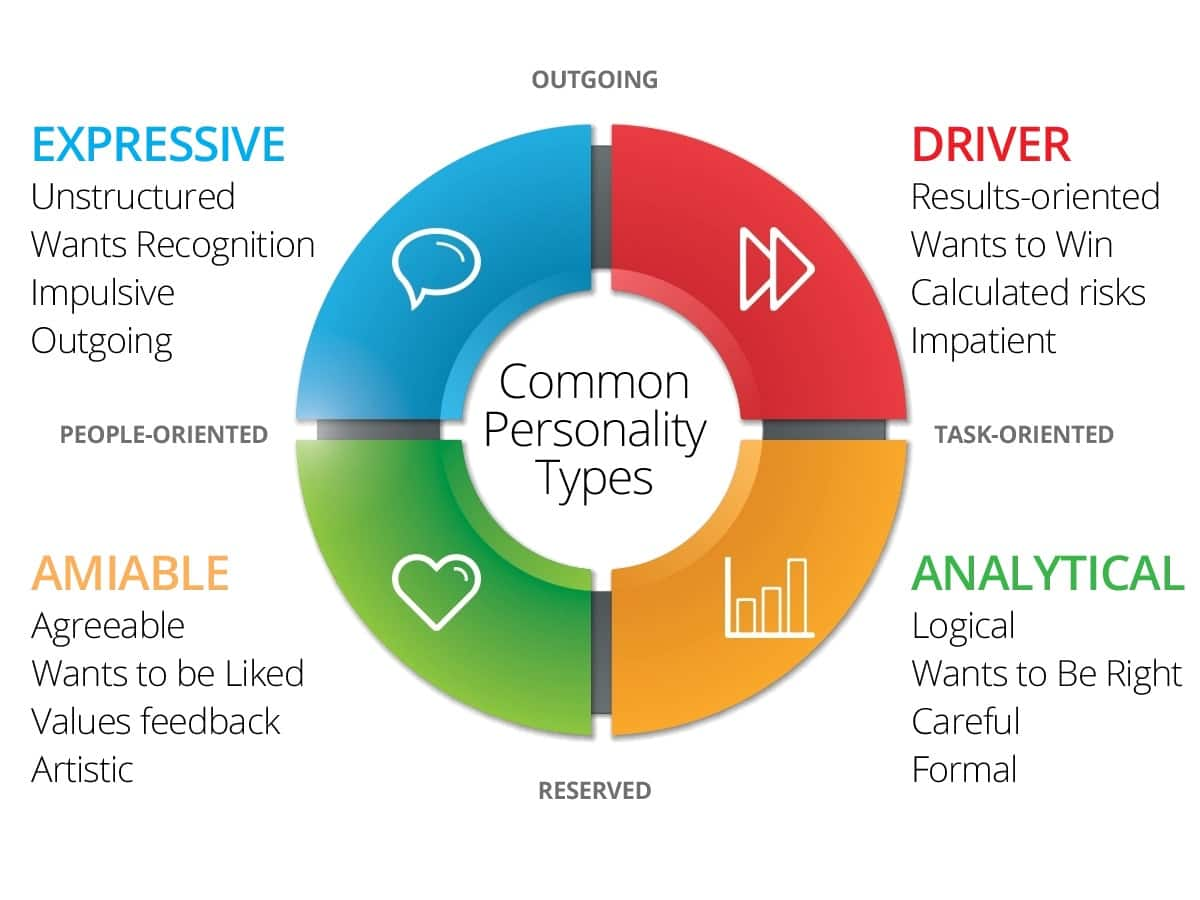 Instead of changing herself, Briggs suggested that differences in how people respond to life are innate and unchanging; that they are hardwired into us, we must recognize them and adapt to them.
Instead of changing herself, Briggs suggested that differences in how people respond to life are innate and unchanging; that they are hardwired into us, we must recognize them and adapt to them.
No matter who you are or how you present yourself, your behavior should be accepted as normal. Briggs thinks so. If you are shy, others should take this into account when interacting with you. If you're on the verge of a nervous breakdown, they have to put up with it. If you are kind and sympathetic, then the rest need to assume that you will behave with them in this way. nine0003
According to this worldview, all your reactions are simply a manifestation of "who you are" and you need not be ashamed of it. You shouldn't try to change yourself, and you won't succeed even if you tried. Even if the traits are negative, nothing can be done about it. Just live with the flaws that God or DNA gave you.
Personality tests are entertaining but unscientific and make you believe that you are significantly more limited than you really are. They paint an inaccurate and oversimplified portrait of people, making sweeping generalizations, lumping everyone into the same category, making the person feel like they have something to do with it. Such tests oversimplify the psyche, and people think that tests know more about us than they really do. On this occasion, Wharton School of Business professor and organizational psychologist Dr. Adam Grant said:
They paint an inaccurate and oversimplified portrait of people, making sweeping generalizations, lumping everyone into the same category, making the person feel like they have something to do with it. Such tests oversimplify the psyche, and people think that tests know more about us than they really do. On this occasion, Wharton School of Business professor and organizational psychologist Dr. Adam Grant said:
“Giving a person the Myers-Briggs questionnaire is like asking him what he likes best: laces or earrings? I think you understand that in any case it will be possible to say: “You see!”, even if this is not quite the right question ... [It] creates the illusion of competence in psychology” (20).
On social networks you will find a whole army of personality gurus who will tell you everything about you: from who you should date and marry, whether you should have children or not, who you should work, and ending with who you will be whether you are successful and happy.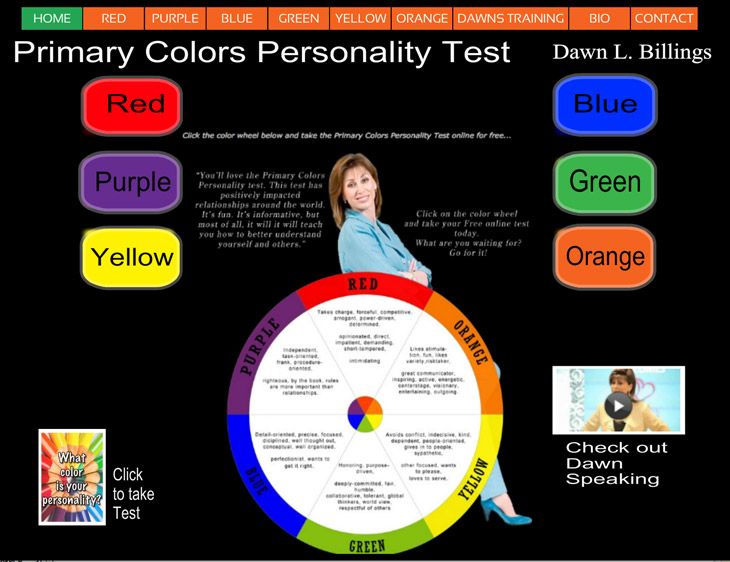 And this will be explained on the basis of the scores that you score in this or that test. Everything looks like the scientific method, but it's really just superstition presented as scientific data. nine0003
And this will be explained on the basis of the scores that you score in this or that test. Everything looks like the scientific method, but it's really just superstition presented as scientific data. nine0003
In social science, there are four criteria that determine the merits of a proposed theory21: can the categories be considered 1) reliable, 2) plausible, 3) independent, and 4) comprehensive? As for the Myers-Briggs personality typology, the evidence says no, no, no, and no. What this test teaches us has nothing to do with understanding your personality; this is the incredible power of marketing. This is the true talent of Myers and Briggs.
Although there is still no consensus among psychologists as to whether personality traits can be changed, there is general agreement that the Myers-Briggs typology should not be taken seriously for the four reasons listed above (22) and that the personality types that have become known through such tests and pop psychologists, does not exist.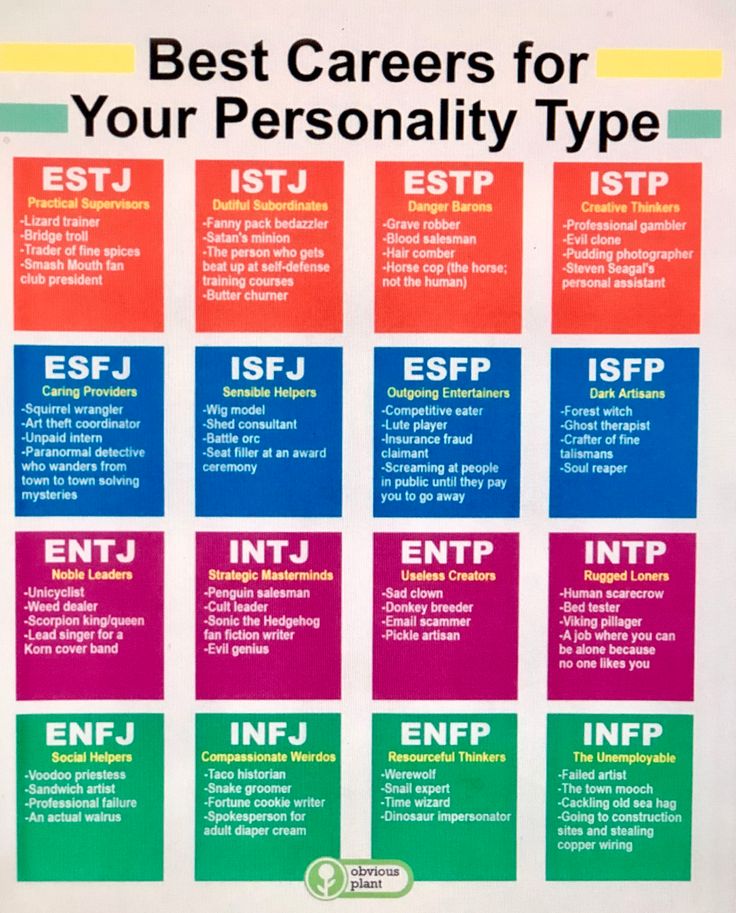 nine0003
nine0003
When approached consciously and prudently, it may be useful for someone to define a personality type or label themselves. For example, Jeff Goines always wanted to be a writer, but did nothing about it. But, positioning himself as a writer, he began to work actively and eventually achieved success in this field. Thus, Goines deliberately labeled himself with a label that helped him achieve his goal.
Labels may serve a purpose, but labels never serve a purpose. If the goal serves the label, it is the label that becomes the expected reality, and you live in such a way as to confirm its truth or conform to it. This can be seen, for example, when someone says, "I do this because I'm an extrovert." Thus, a person sets goals that correspond to his present, and not those that change and fully reveal his potential. nine0003
It is necessary that the goals be aimed at the formation of personality, and not built on its basis. Entrepreneur, venture capitalist and writer Paul Graham said:
“The more labels you put on yourself, the dumber they make you” (23).
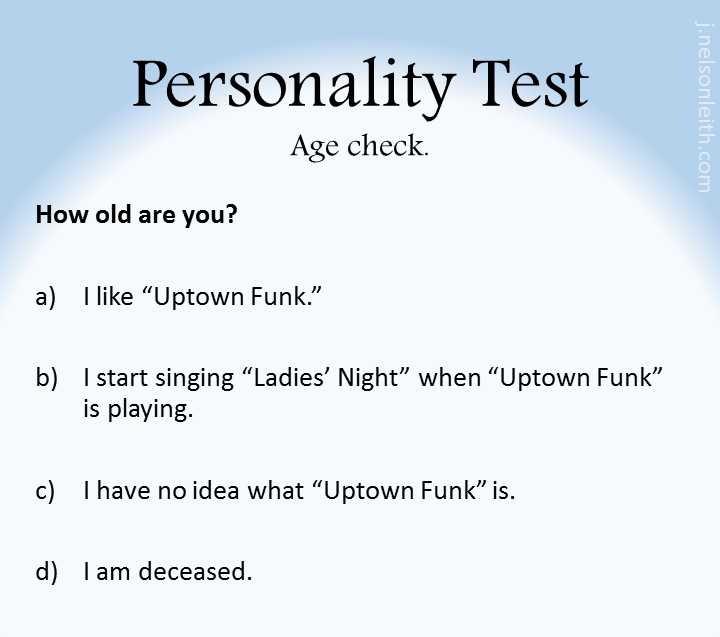
When a person deliberately labels himself an introvert or even an extrovert, he limits himself; except when, for some reason, one such label will allow him to achieve a certain goal.
Research shows that these labels and diagnoses help psychotherapists work. But do not stick them on patients too often. A person identifies himself, largely relying on this definition and significantly limiting his ability to change (24). nine0003
Labels work like blinders. By accepting them, a person becomes "stupid" because he stops seeing cases where they do not correspond to reality (25). Harvard psychologist and mindfulness expert Dr. Ellen Langer put it this way: “If something is presented as the ultimate truth, alternative ways of thinking are not even considered. In depression, a person tends to believe that he is constantly in it. If you consciously pay attention to the impermanence of such a state, you will understand that this is not so. nine0003
The concept of personality is much more subtle and complex than an oversimplified generalization or categorization.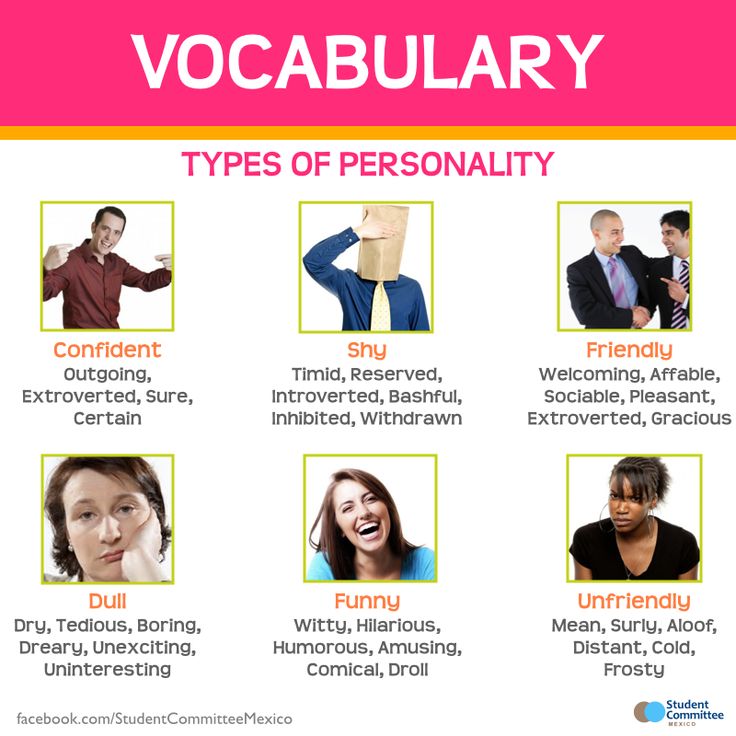 You cannot treat it as a separate feature, independent of context, culture, behavior and a thousand other factors. On this subject, personality psychologist Dr. Katherine Rogers said:
You cannot treat it as a separate feature, independent of context, culture, behavior and a thousand other factors. On this subject, personality psychologist Dr. Katherine Rogers said:
"We know that the theory of personality types does not work ... as for the opinion about personality traits, I would trust the tests of Myers and Briggs no more than a horoscope" (26).
Dr. Rogers is absolutely right. And this is incredibly good news! Once you allow yourself to stop identifying with a certain type, such as being an introvert or an extrovert, you become more open. Your options and choices are expanding. You are more willing to take responsibility for your life and can act on your own. You do what you want, no matter how you see yourself at the moment. nine0003
Despite the non-scientific nature of personality tests, they are still popular in popular culture as well as in corporate environments in the United States. Often even the salary depends on how a person answered the questions of such a test.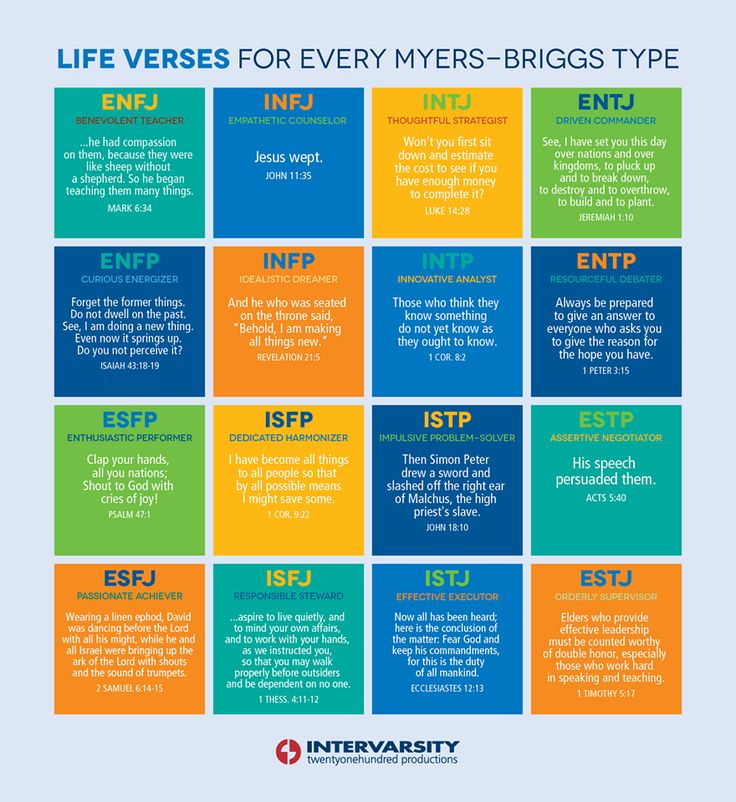 For many who didn't fit, the tests ruined their careers, and for those who didn't fit in a certain society, they ruined a dream (27).
For many who didn't fit, the tests ruined their careers, and for those who didn't fit in a certain society, they ruined a dream (27).
You cannot be described as a narrow type of person. In different places and surrounded by different people, you change. Your personality is dynamic, flexible and dependent on the situation. Moreover, it changes throughout your life much more than you can imagine. nine0003
At different stages of life, at different ages, your individuality will manifest itself in different ways. Hell, even in one day you can live dozens of different personalities! Radio host Jordan Harbinger once said in an interview: “Before coffee I am a “strategist”, after coffee I am a “commander”.
Instead of thinking of the concept of personality as a type you fit into, think of it as a continuum of behaviors and attitudes—flexible, changeable, and
context dependent. The most scientifically based theory considers the "Five Factors" of personality (28). nine0003
- How willing are you to learn and try new things (openness to new experiences).
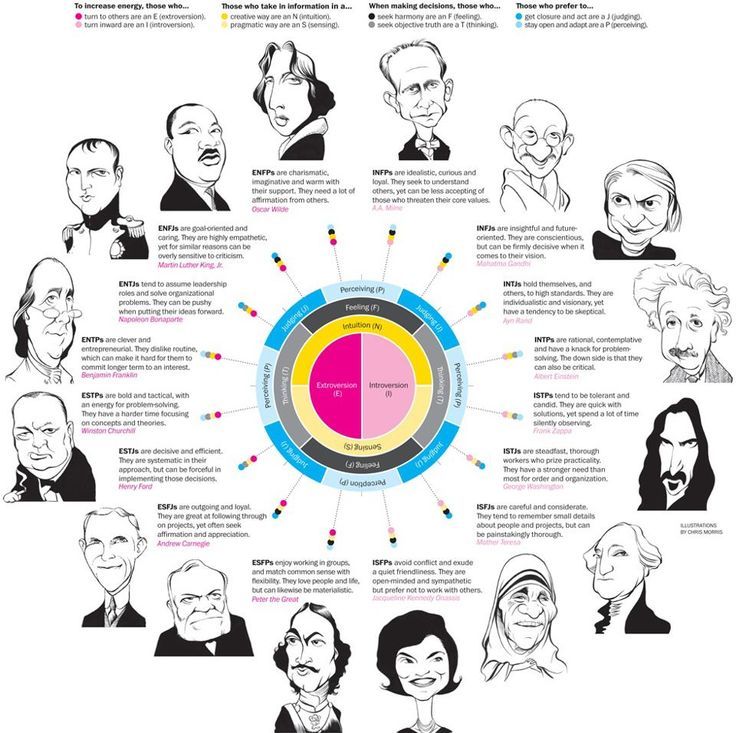
- To what extent you are organized, motivated and consciously go to the goal (conscientiousness, consciousness).
- How active and interacting you are with others (extraversion).
- How friendly and willing you are to come to terms with others (goodwill).
- How well do you deal with stress and other negative emotions (neuroticism).
But none of these factors is a personality type. On the contrary, depending on the situation, experience and preferences, we combine all these factors. In different situations and circumstances, you will behave differently - sometimes better, sometimes worse.
For example, researchers have found a strong relationship between the requirements of a social role and the manifestations of a person's personal qualities (29). If a particular role requires a person to be a conscientious extrovert, they will behave more conscientiously and exhibit themselves as an extrovert. nine0003
But as soon as he ceases to play this role and takes on another, requiring less conscientiousness or extraversion, he shows these "features" more weakly.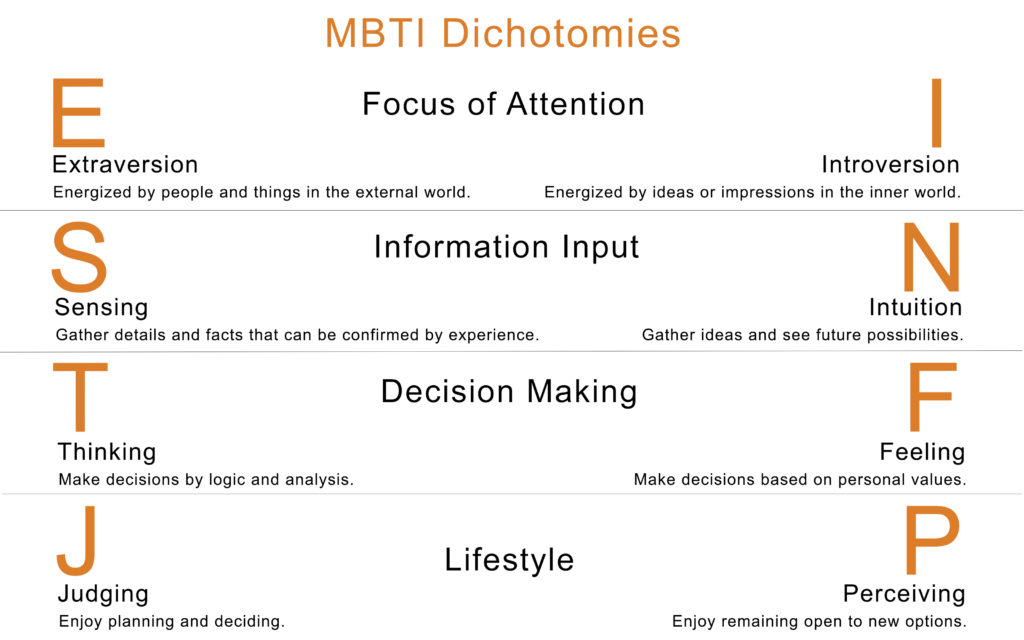 Long-term studies emphasize that a person's personality is often explained by the social roles they have or have not taken during their lifetime. As a result, social role is often studied as the main mechanism that defines personality (30).
Long-term studies emphasize that a person's personality is often explained by the social roles they have or have not taken during their lifetime. As a result, social role is often studied as the main mechanism that defines personality (30).
We may consider ourselves permanent, but our behavior and attitudes often change. Rather, our view of our own behavior is unchanged, which makes it seem unchanged. We selectively pay attention to what we associate ourselves with and ignore what we do not associate with. At the same time, we often miss or deliberately do not notice cases when we do not behave as we should in accordance with our character. nine0003
Recent studies show that people want to be more flexible and able to change, while they have a desire to improve their personality. Less than 13% of people reported being satisfied with themselves the way they are (31). They generally wanted higher scores on the openness to experience, conscientiousness, and extraversion scales, and lower scores on the neuroticism scale.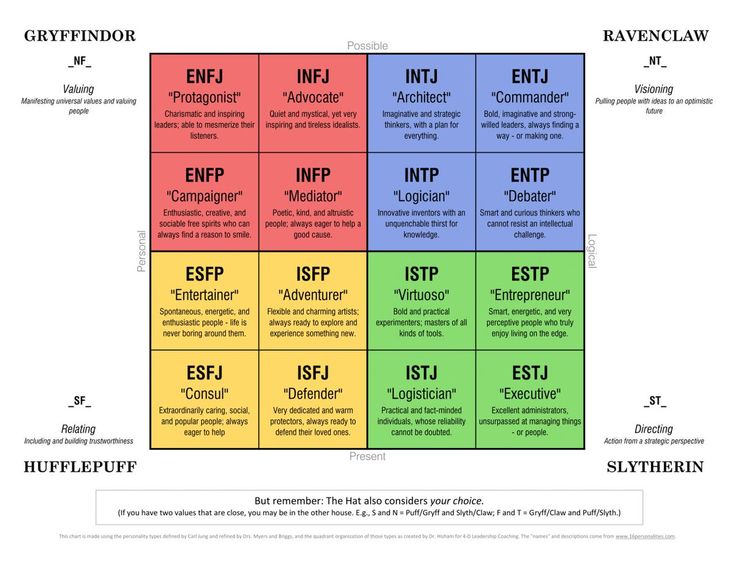
If someone has a reason to become better, then according to modern scientific data, this is possible. A 2015 study by Drs. Nathan Hudson and Chris Frehley found that personality can be intentionally changed through goal setting and consistent self-effort (32). Research by Drs. Christopher Soto and Jule Specht shows that personality changes faster when a person has a purpose and is happy with their life (33). nine0003
Each of the five factors changes throughout life whether you try to influence them or not, but it is possible to consciously correct any of them. Vanessa O'Brien set herself the goal of climbing Everest, and as a result, she became more open to new experiences.
Current research on personality variability is conservative about expected changes, at least in the short term. However, as you read this book, you will see that the degree of change is not related to its feasibility. Rather, people do not usually change purposefully and significantly due to emotional and situational factors that can be controlled.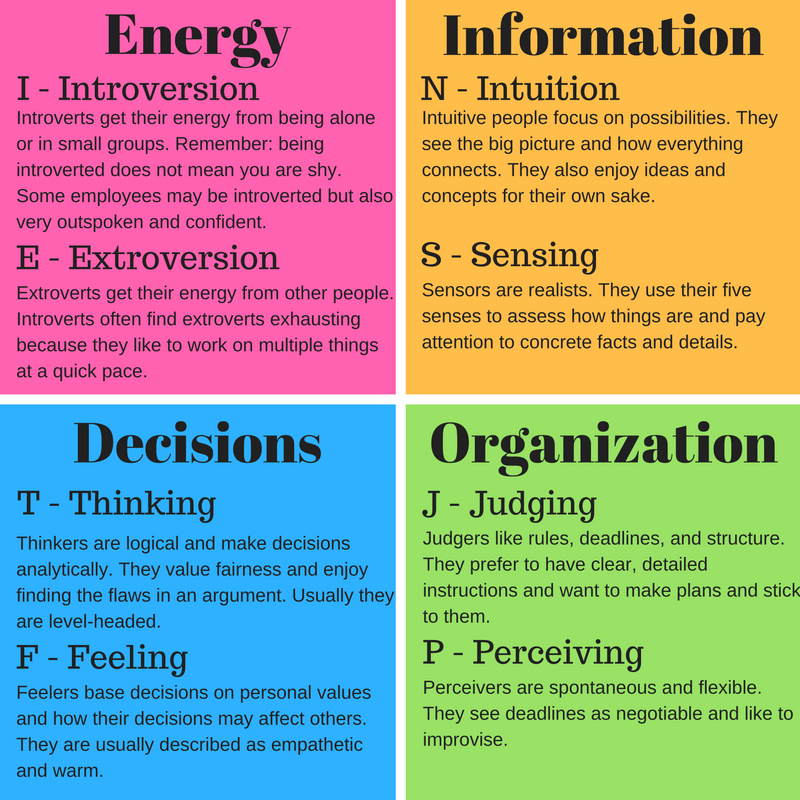 nine0003
nine0003
Intentional changes are difficult emotionally: they are not only unpleasant, but also extremely painful. If you do not want to be subjected to such experiences, to correct your point of view, your behavior and environment, do not expect big changes (at least in the short term). The key point in personal transformation is psychological flexibility, and not excessive attachment to the current personality or interests. Radical change happens the moment you become fully committed to your future goal and accept your emotions instead of avoiding them. nine0003
Big changes are very possible. Moreover, all five factors are manifestations of your behavior, and in fact, these are skills that are not so difficult to master. You can not only become more open to new things, but also learn to be less open. You can learn to be more organized and focused on a goal, to be more introverted or extroverted. You can learn how to communicate better with different people. You can become more emotionally literate, respond appropriately to the situation and stop being a victim. nine0003
nine0003
Perhaps the most provocative aspect of dividing people into categories or types is the possibility of viewing them as innate and unchanging. If you assume that a person is unable to change, then you define him based on his past. If he has done something before, you see him as a type who always tends to do this, and do not accept that personality can change.
The limitations of this view are brilliantly reflected in the French writer Victor Hugo's Les Misérables (34). It tells the story of two people - the self-righteous policeman Javert, who believes that people do not change, and Jean Valjean, a former convict who changes his life and devotes himself to a higher and holy cause. Javert does not recognize that Valjean has changed. In his opinion, a person cannot be forgiven for the deeds of the past and, having acted badly, he forever remains bad. nine0003
Throughout the novel, Javert and Valjean encounter each other in various situations. Bringing Valjean to justice becomes Javert's obsession.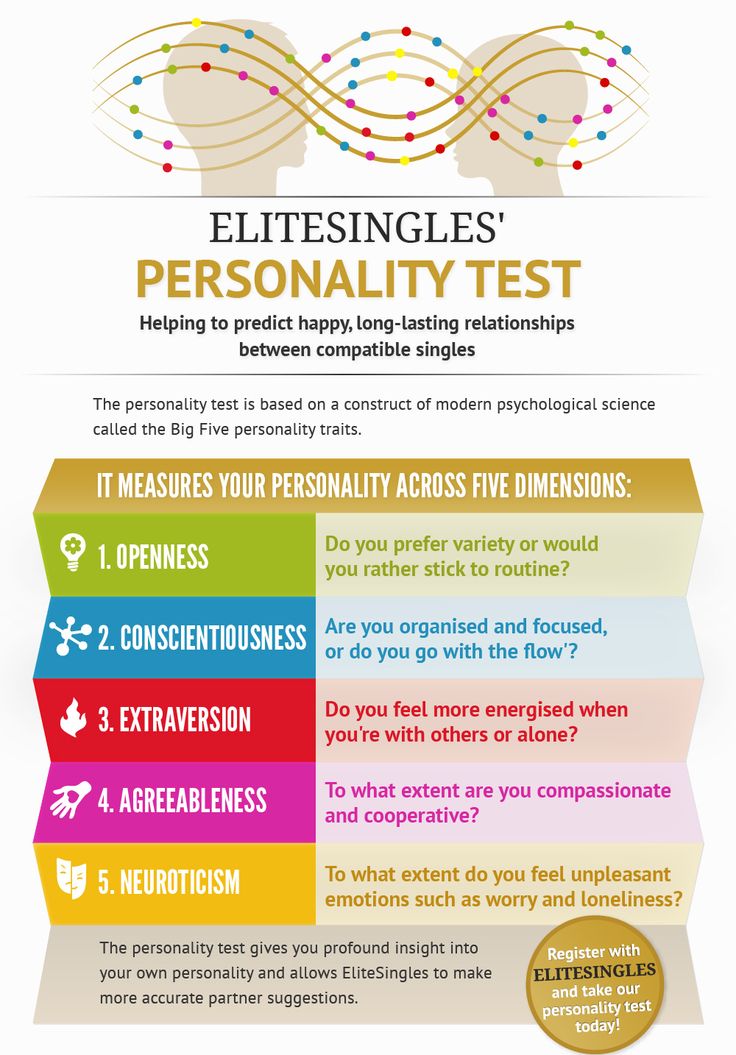 All this time, Valjean is trying to just live, helping people in trouble, thereby trying to atone for his criminal past. In the end, Javert refuses to accept the contradiction that Valjean shows him and commits suicide. Instead of changing his point of view, he kills himself.
All this time, Valjean is trying to just live, helping people in trouble, thereby trying to atone for his criminal past. In the end, Javert refuses to accept the contradiction that Valjean shows him and commits suicide. Instead of changing his point of view, he kills himself.
— So, at what stage are you now? nine0195 — How do you judge yourself or others by past actions?
- Is it possible that you have boxed yourself into a certain type?
- What happens if you stop categorizing yourself and open up the possibility of change?
References
18. Jung KG Psychological types. Moscow: Academic project, 2017.
19. Emre M. Th e Personality Brokers: Th e Strange History of Myers-Briggs and the Birth of Personality Testing. New York: Doubleday, 2018.
20. Goldberg E. Personality Tests Are the Astrology of the Office // The New York Times, September 17, 2019 // nytimes.com/2019/09/17/style/personality-tests-office.html.
21. Grant A. Goodbye to MBTI, the Fad Th at Won't Die // Psychology Today, September 19, 2013 // psychologytoday.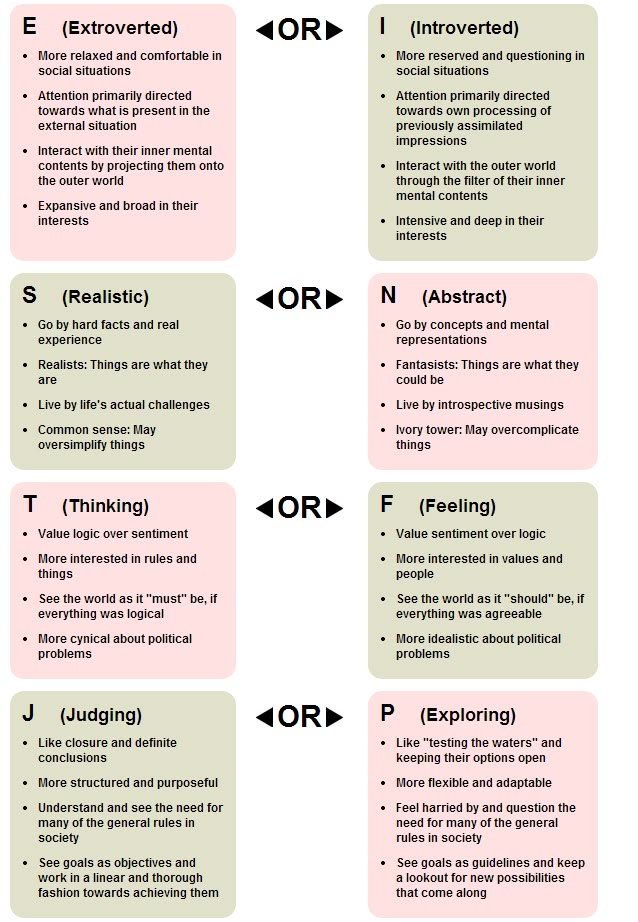 com/us/blog/give-and-take/201309/goodbye-mbti- the-fad-won-t-die.
com/us/blog/give-and-take/201309/goodbye-mbti- the-fad-won-t-die.
22. Grant, Say Goodbye to MBTI, the Fad Th at Won't Die; Moffa M. A Critique of Th e Myers Briggs Type Indicator (MBTI) — Part I: One Expert's Review // Recruiter, April 1, 2011 // recruiter.com/i/critique-of-themyers-briggs-type-indicator- critique/. nine0003
23. Graham P. Keep Your Identity Small // paulgraham.com, February 2009 // paulgraham.com/identity.html.
24. Miller W. R., Rollnick S. Motivational Interviewing: Preparing People to Change Addictive Behavior. New York: Guilford Press, 2002.
25. Langer E. Mindfulness. Moscow: Eksmo, 2017.
26. Kate Rogers, op. by Fisher T. I Have Personality Test Anxiety // Woolly // woollymag.com/feelings/i-have-personality-test-anxiety.html.
27. Goldberg, Personality Tests Are the Astrology of the Office. nine0003
28. Goldberg L. R. An Alternative ‘Description of Personality’: The Big-Five Factor Structure // Journal of Personality and Social Psychology.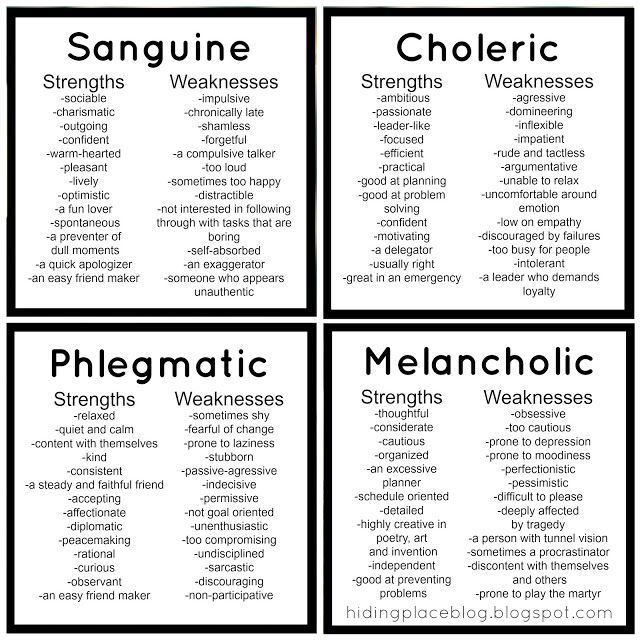 1990 Vol. 59. No. 6. P. 1216.
1990 Vol. 59. No. 6. P. 1216.
29. Heller D., Perunovic W. Q. E., Reichman D. The Future of Person — Situation Integration in the Interface Between Traits and Goals: A Bottomup Framework // Journal of Research in Personality. 2009 Vol. 43. No. 2.pp. 171–178.
30. Ozer D. J., Benet-Martinez V. Personality and the Prediction of Consequential Outcomes // Annual Review of Psychology. 2006 Vol. 57.Pp. 401–421. nine0003
31. Hudson N. W., Roberts B. W. Goals to Change Personality Traits: Concurrent Links Between Personality Traits, Daily Behavior, and Goals to Change Oneself // Journal of Research in Personality. 2014. Vol. 53.Pp. 68–83.
32. Hudson N. W., Fraley R. C. Volitional Personality Trait Change: Can People Choose to Change Th eir Personality Traits? // Journal of Personality and Social Psychology. 2015. Vol. 109. No. 3. P. 490.
33. Soto C. J. Is Happiness Good for Your Personality? Concurrent and Prospective Relations of the Big Five with Subjective Well-Being // Journal of Personality.